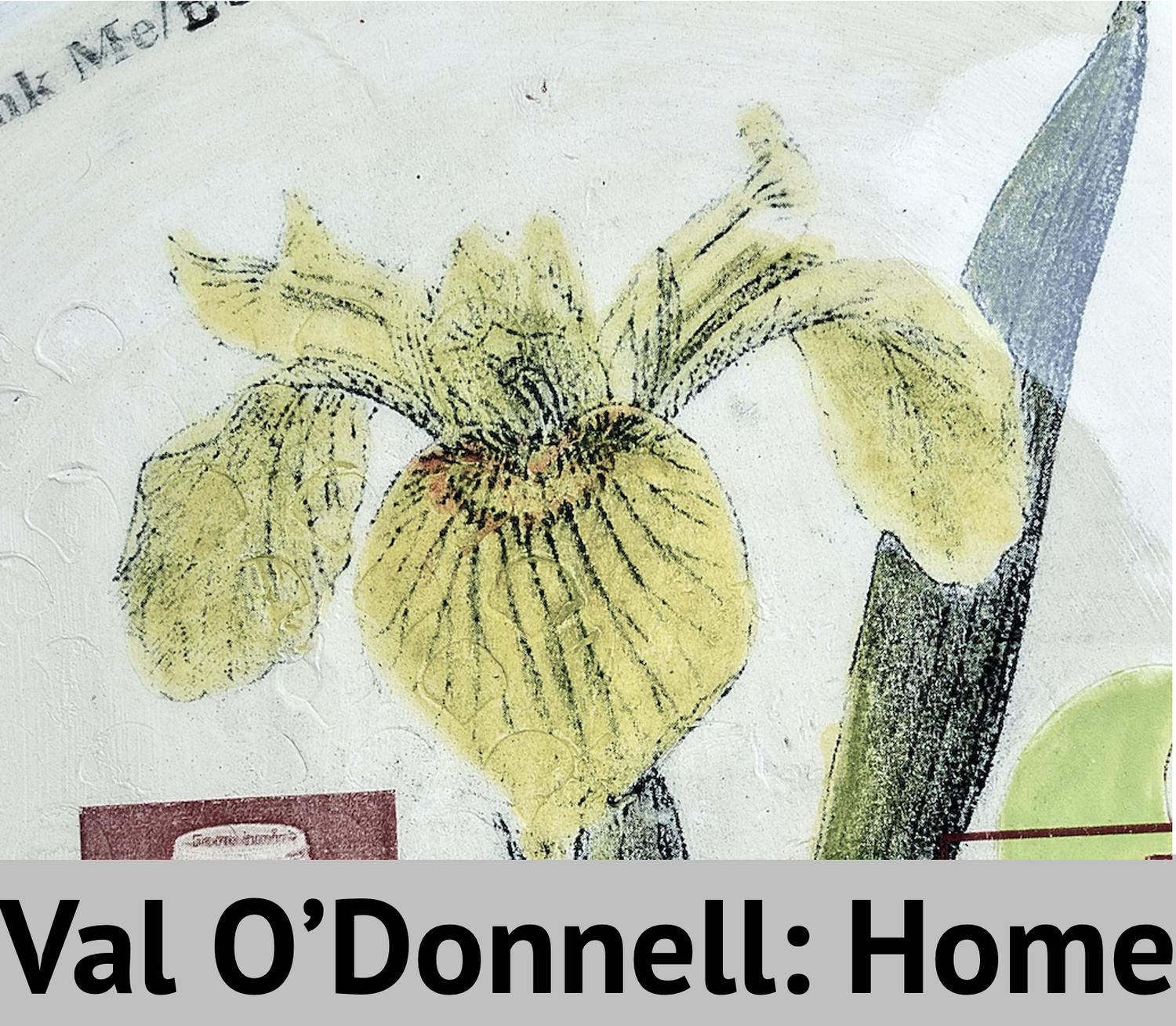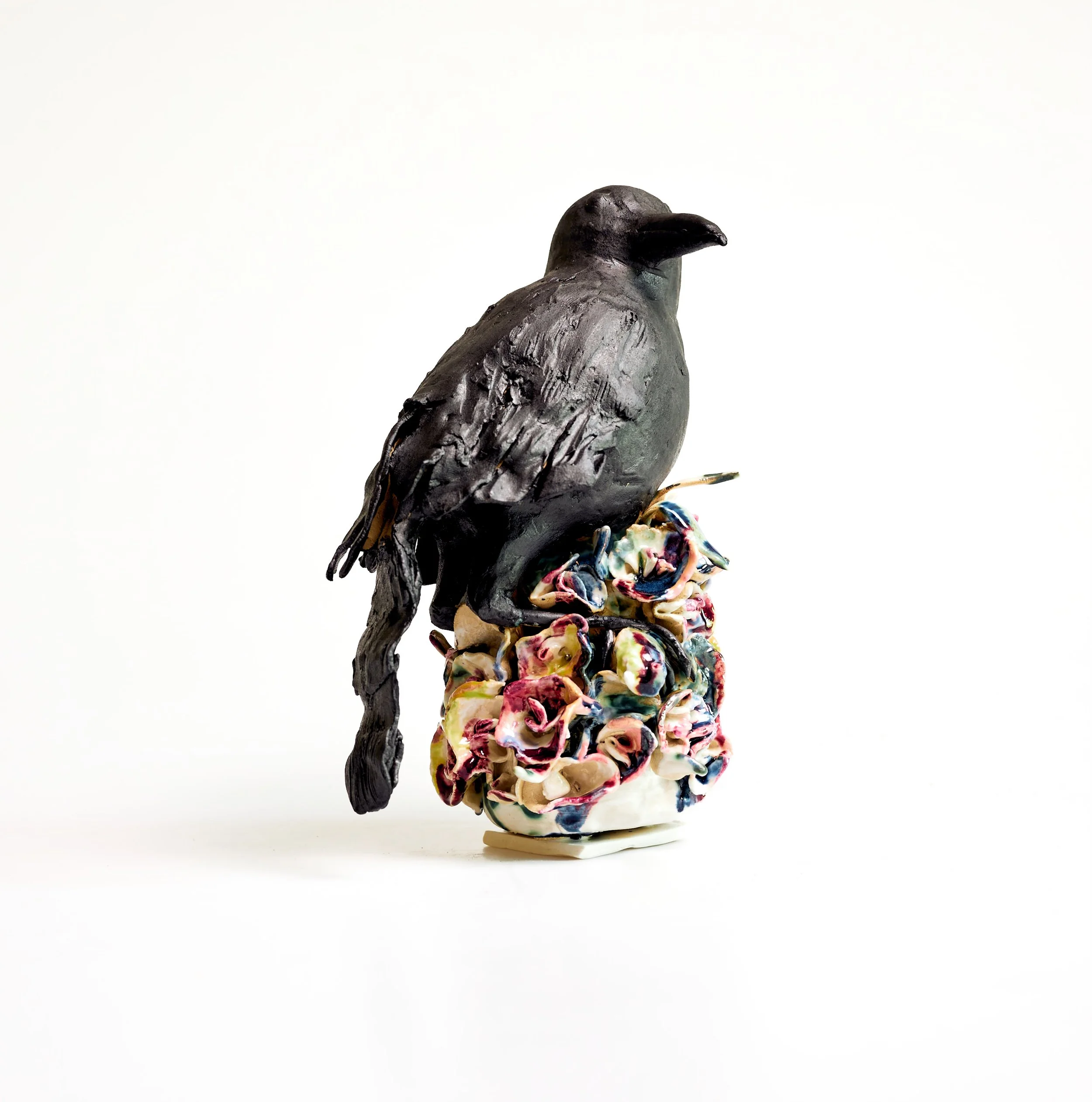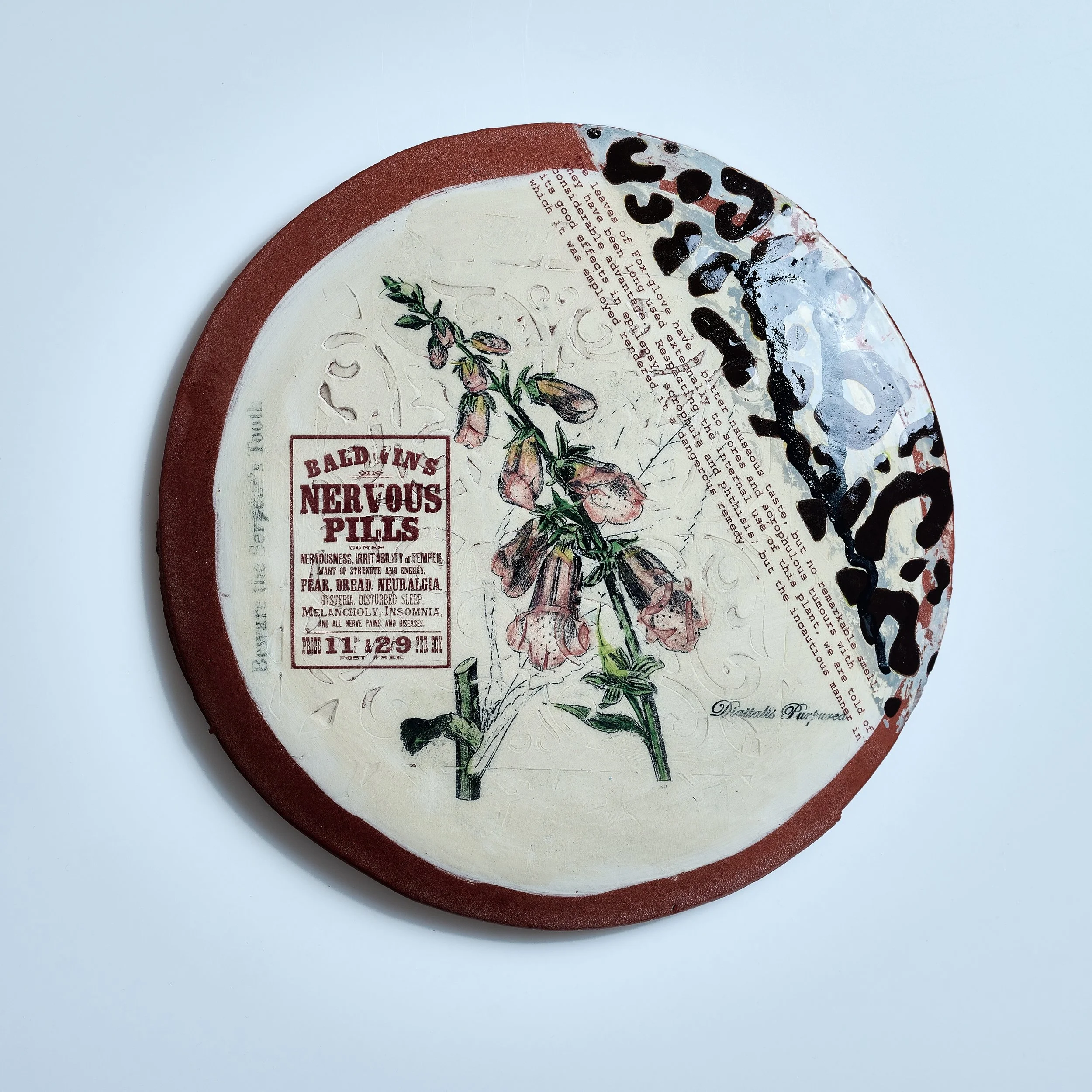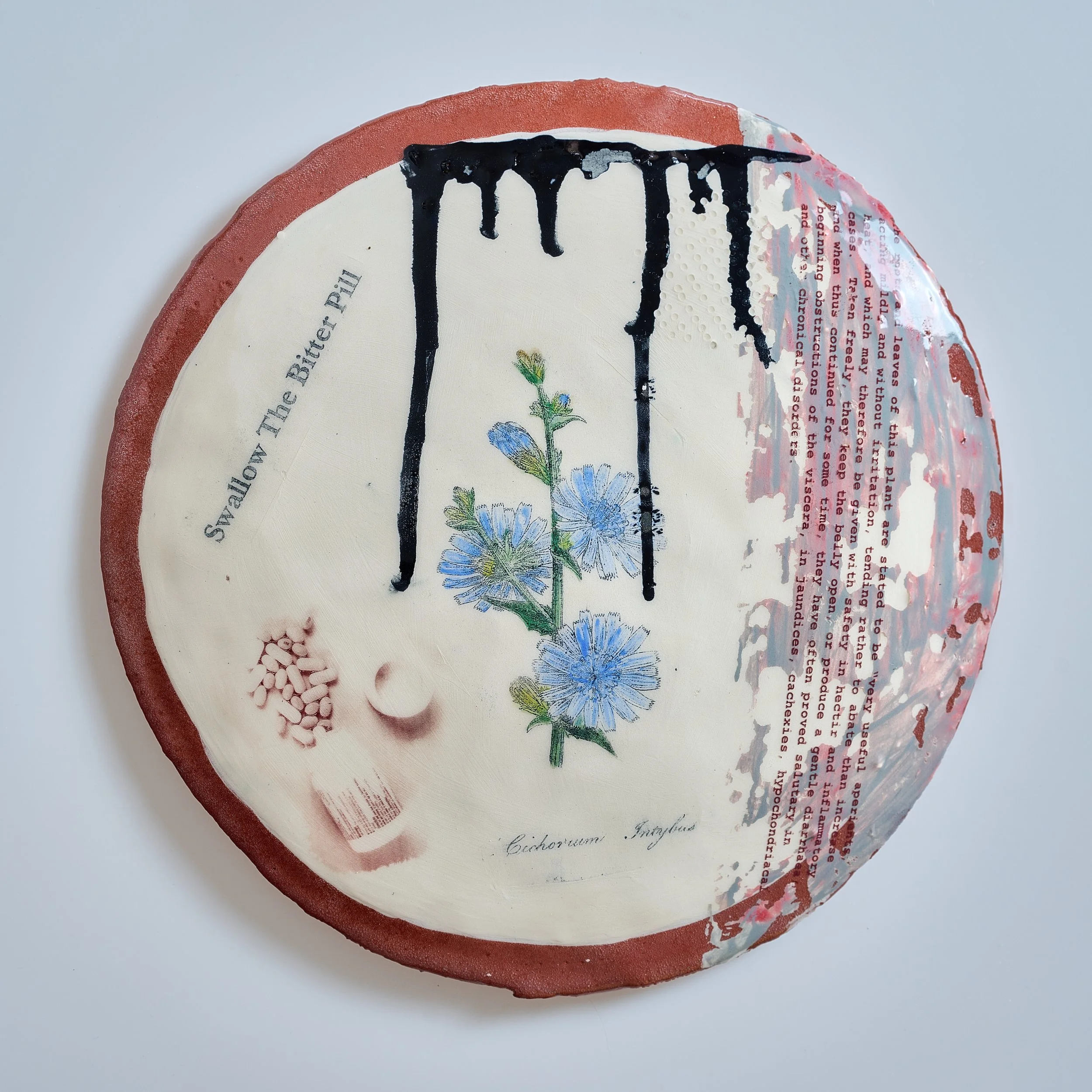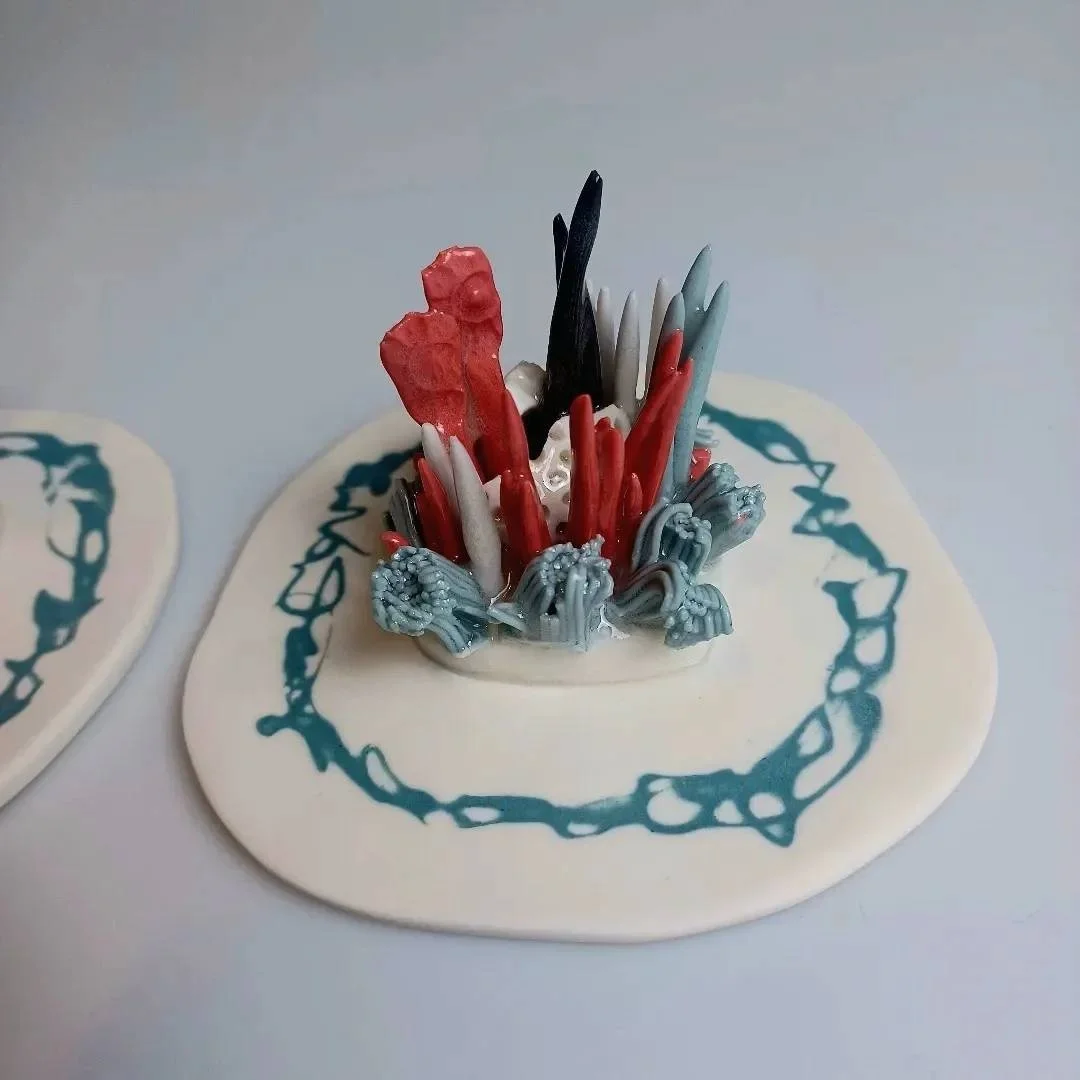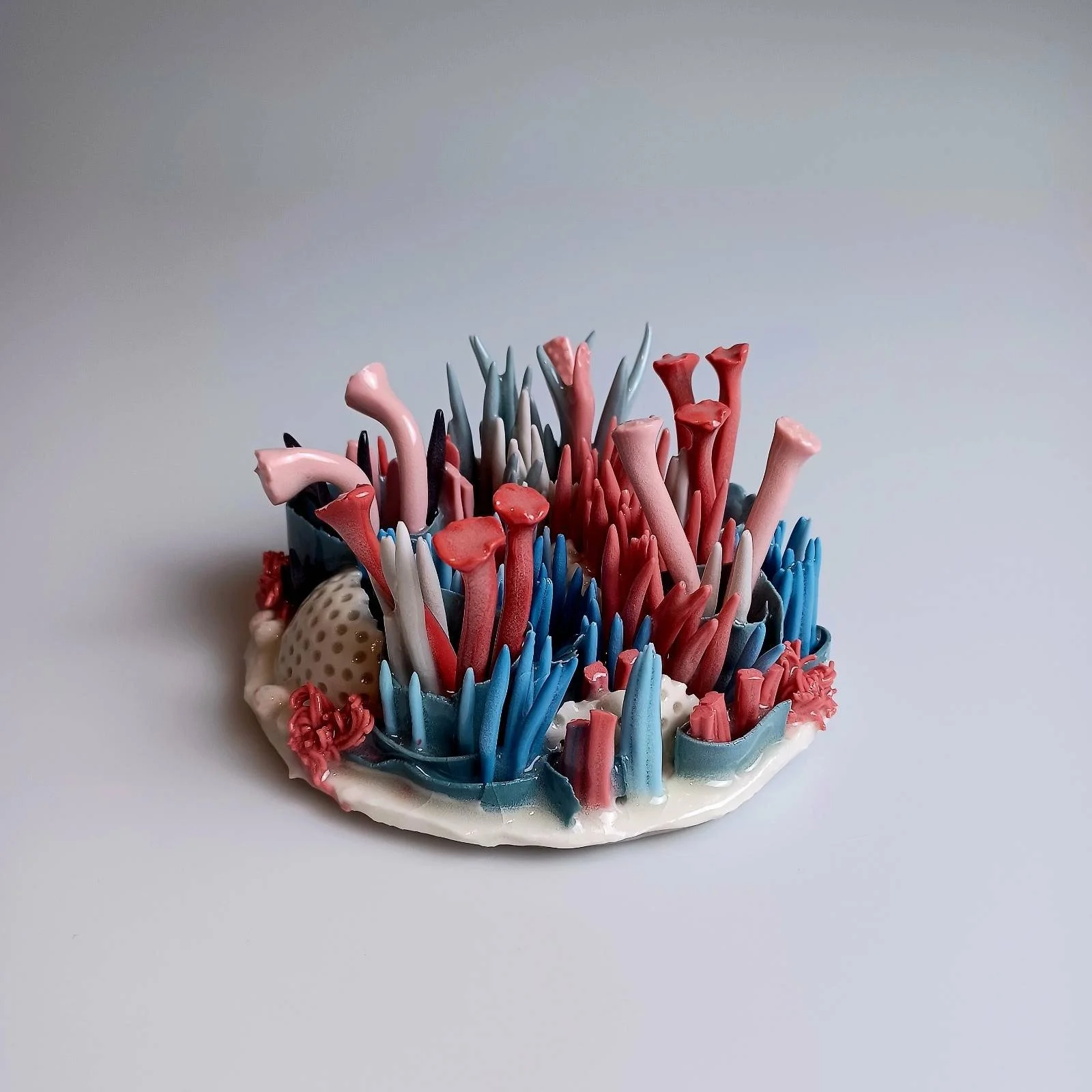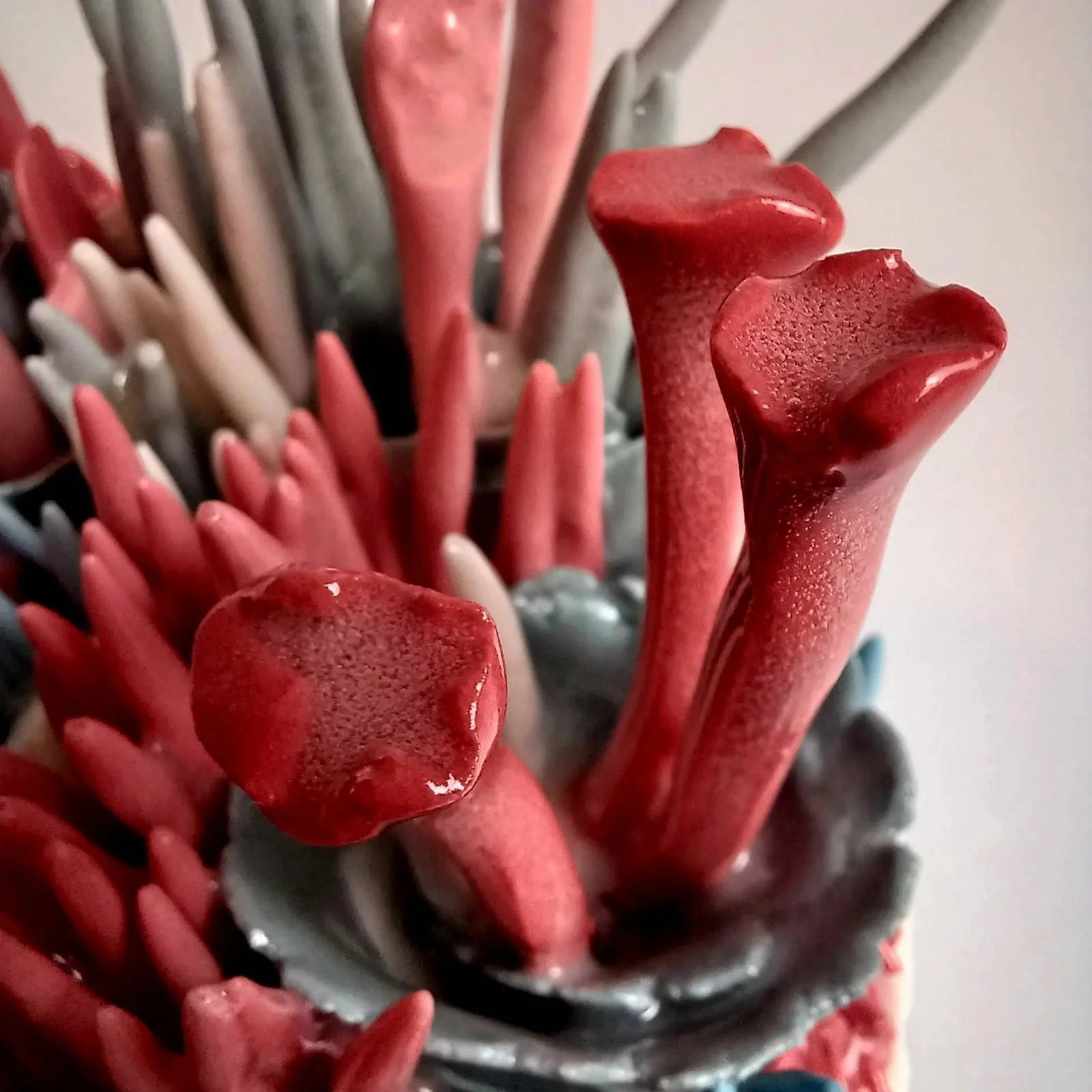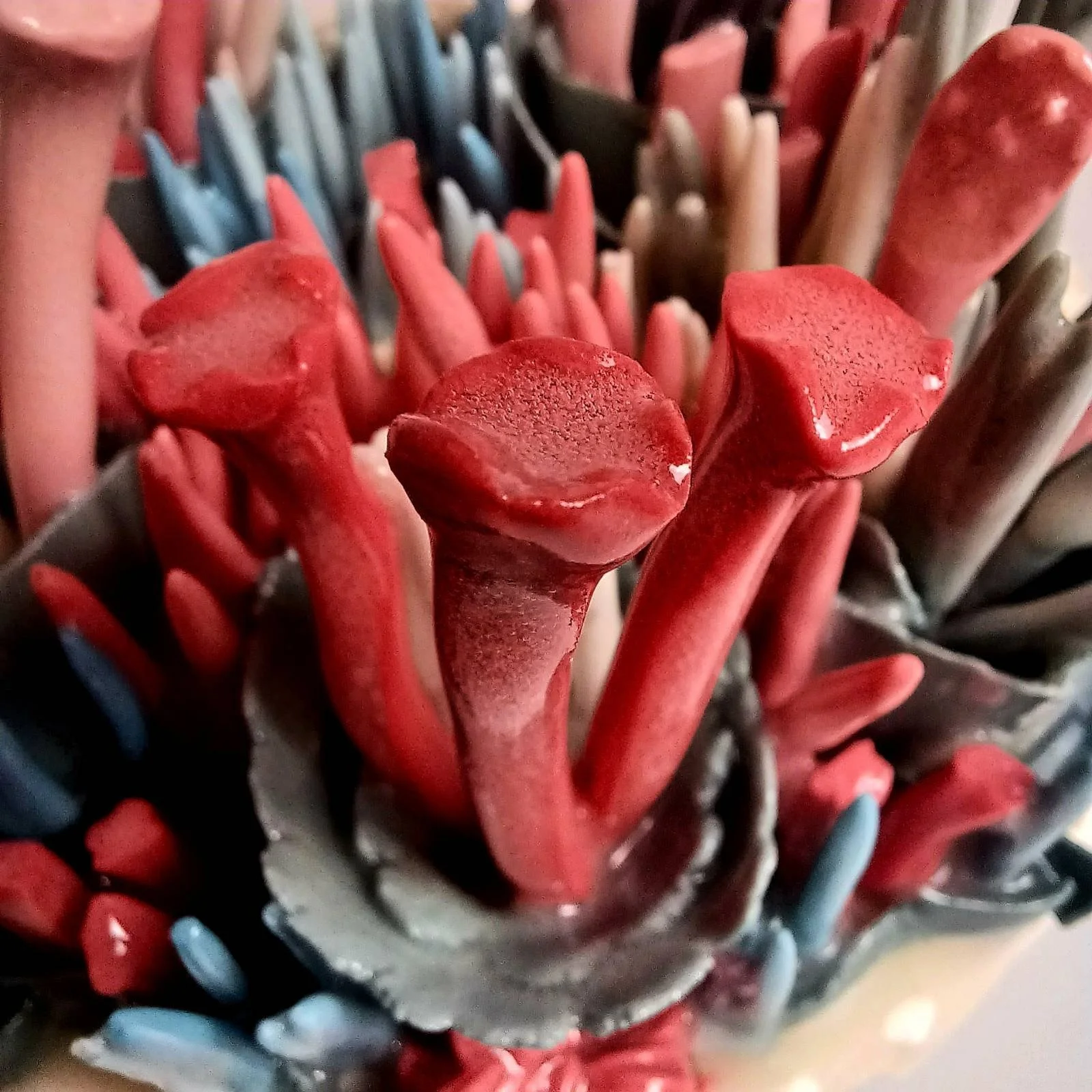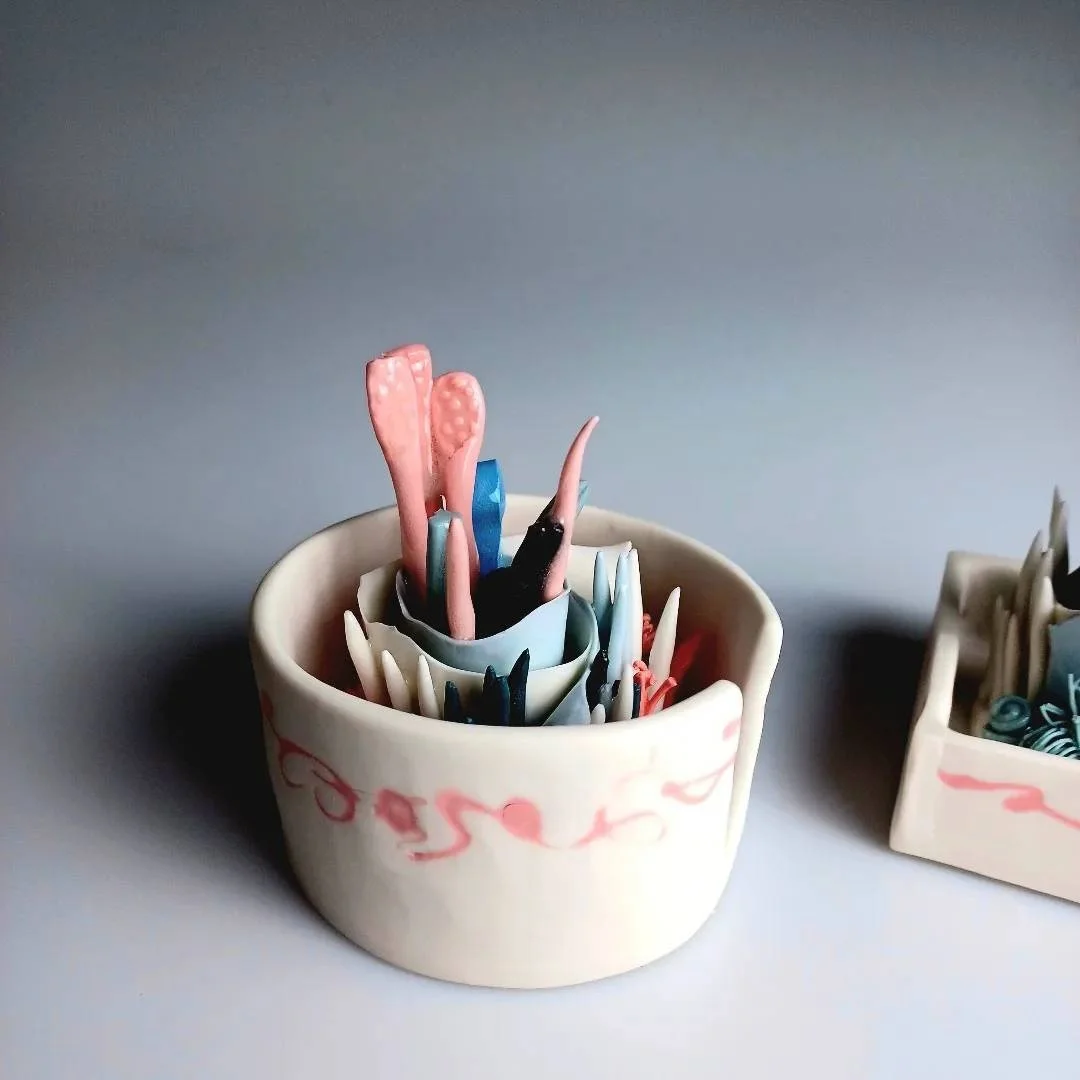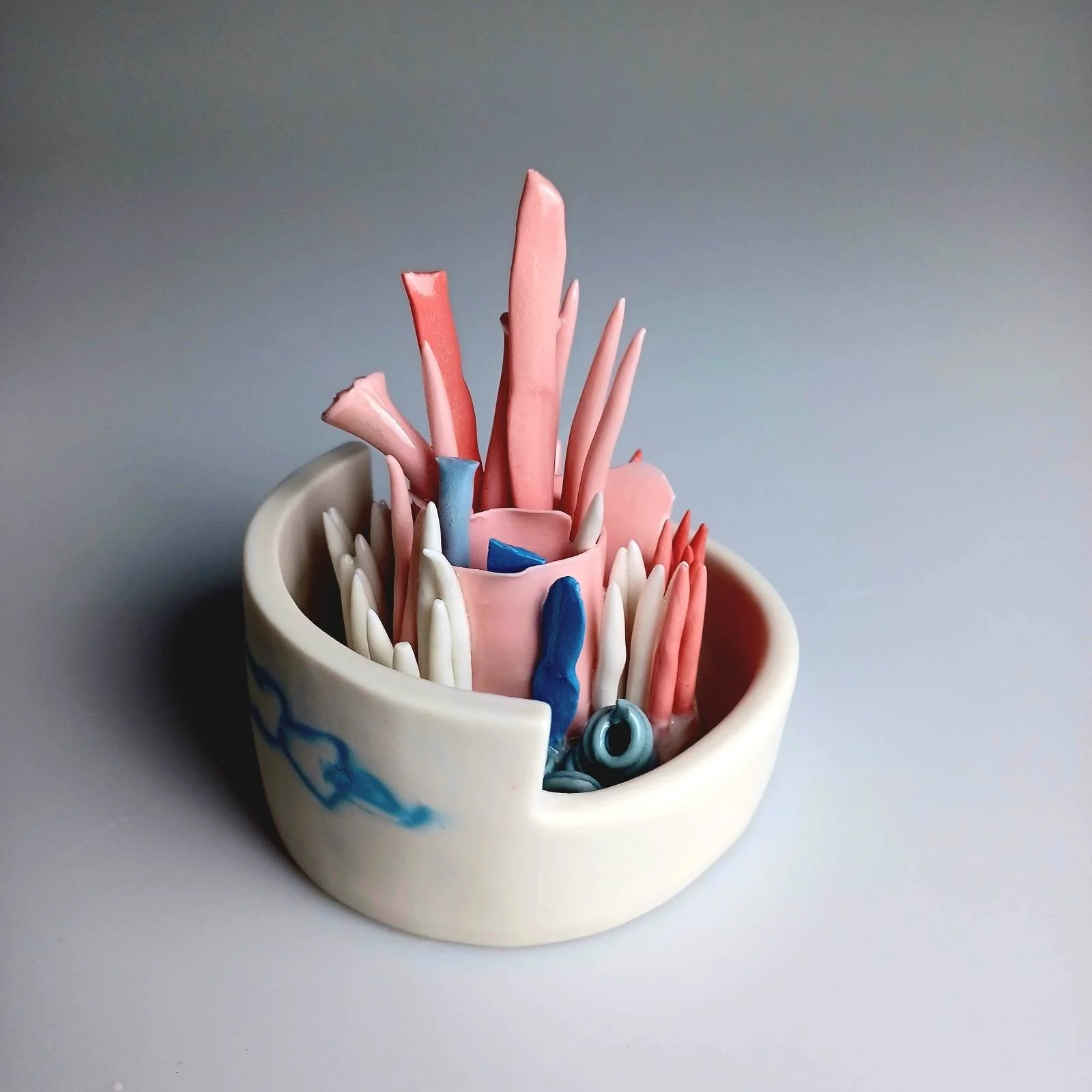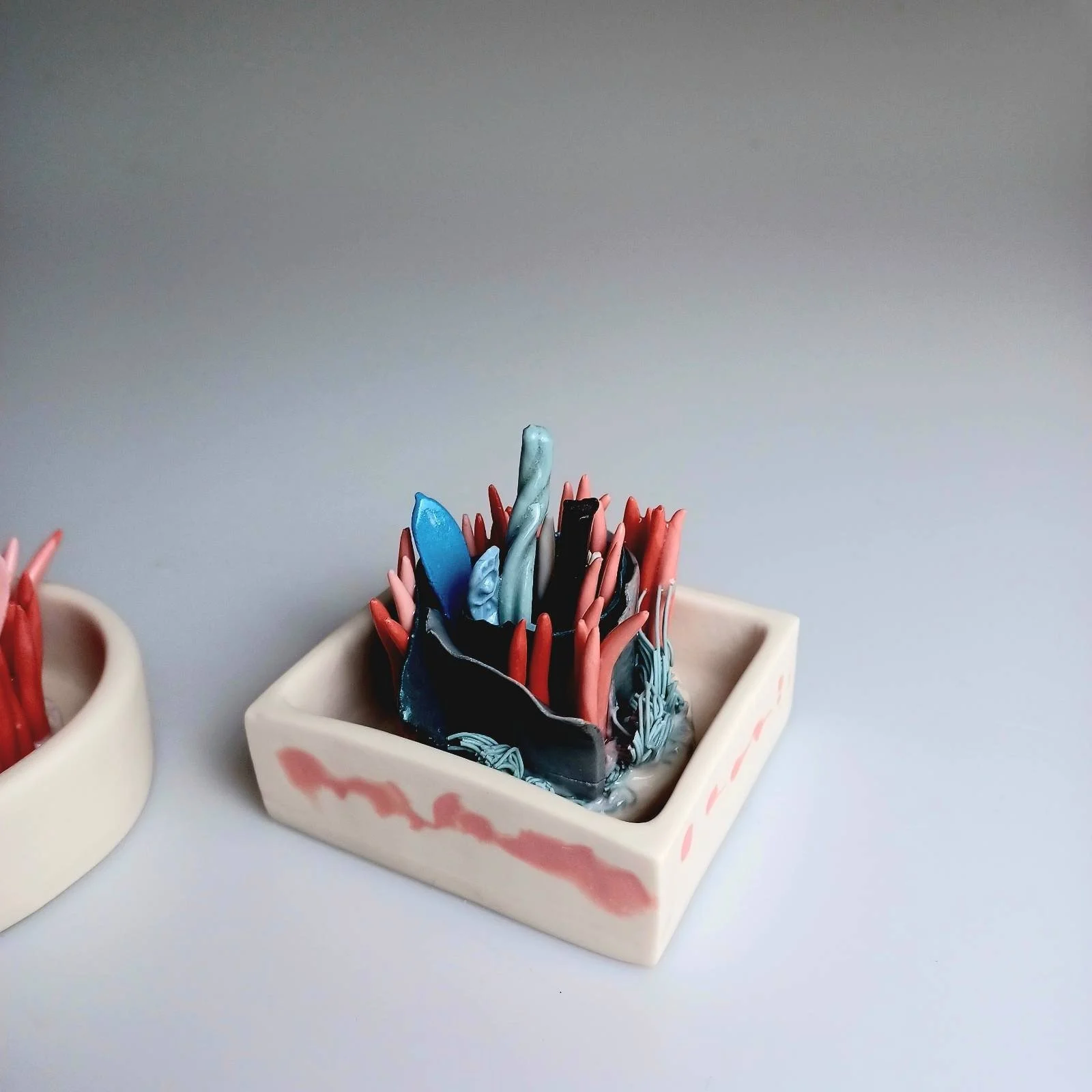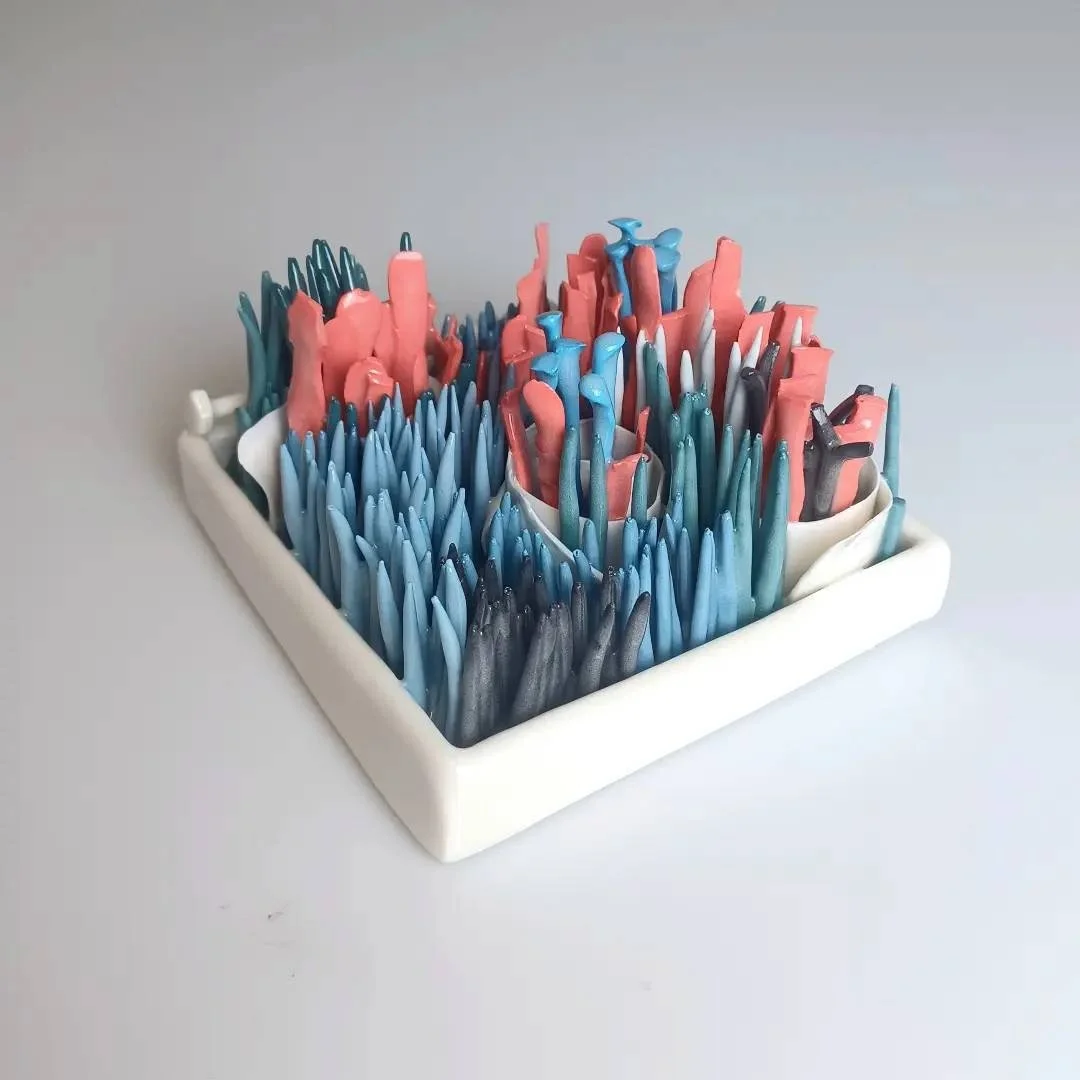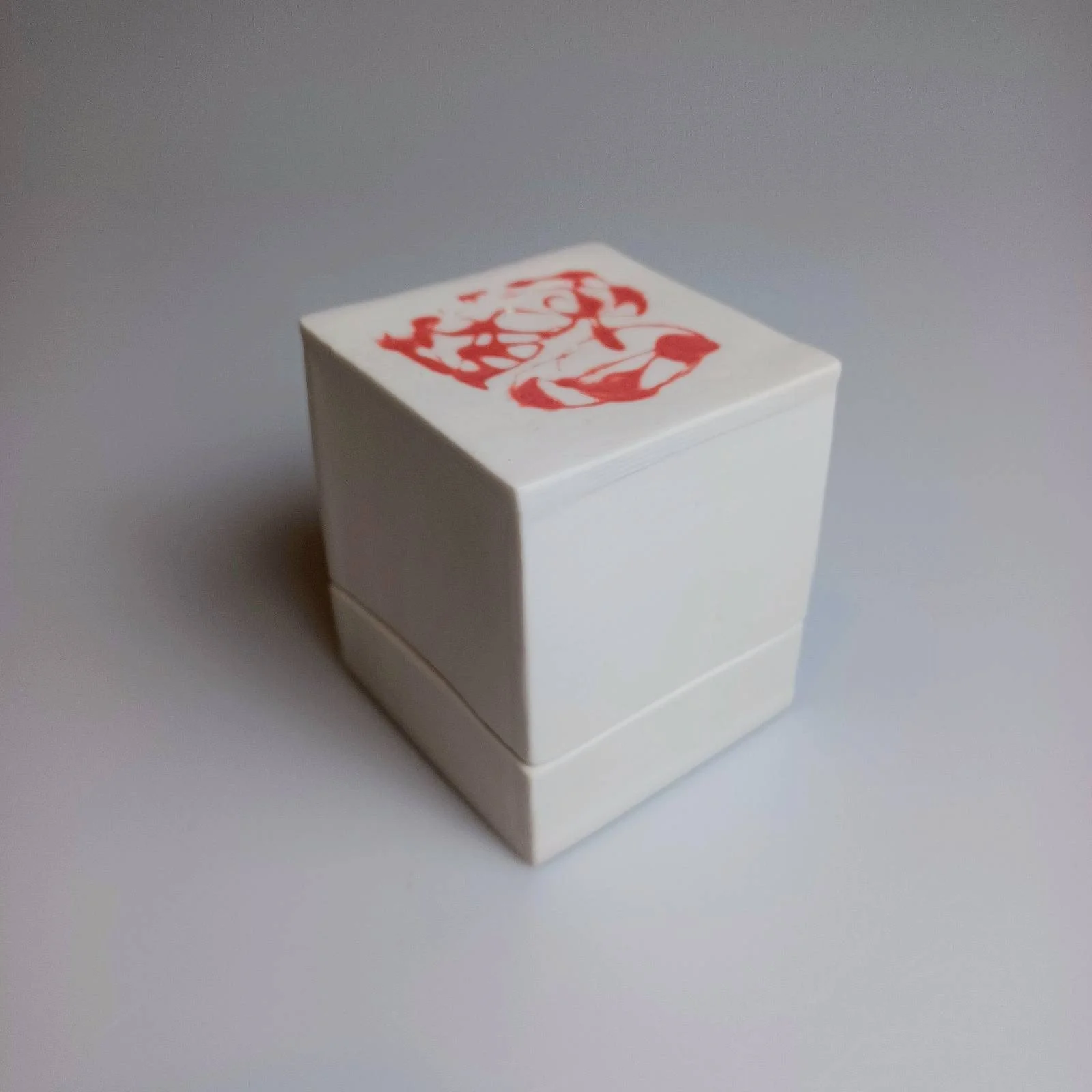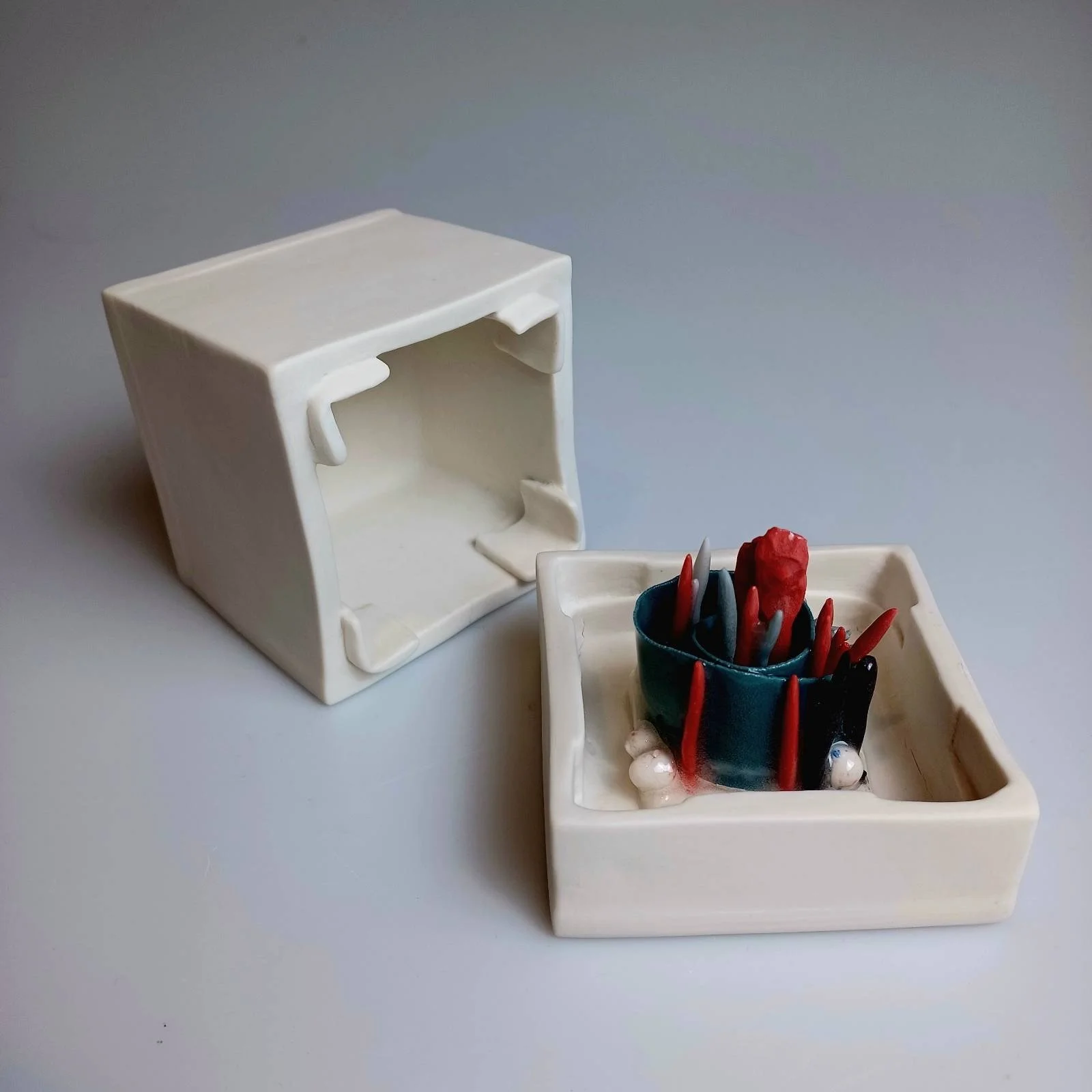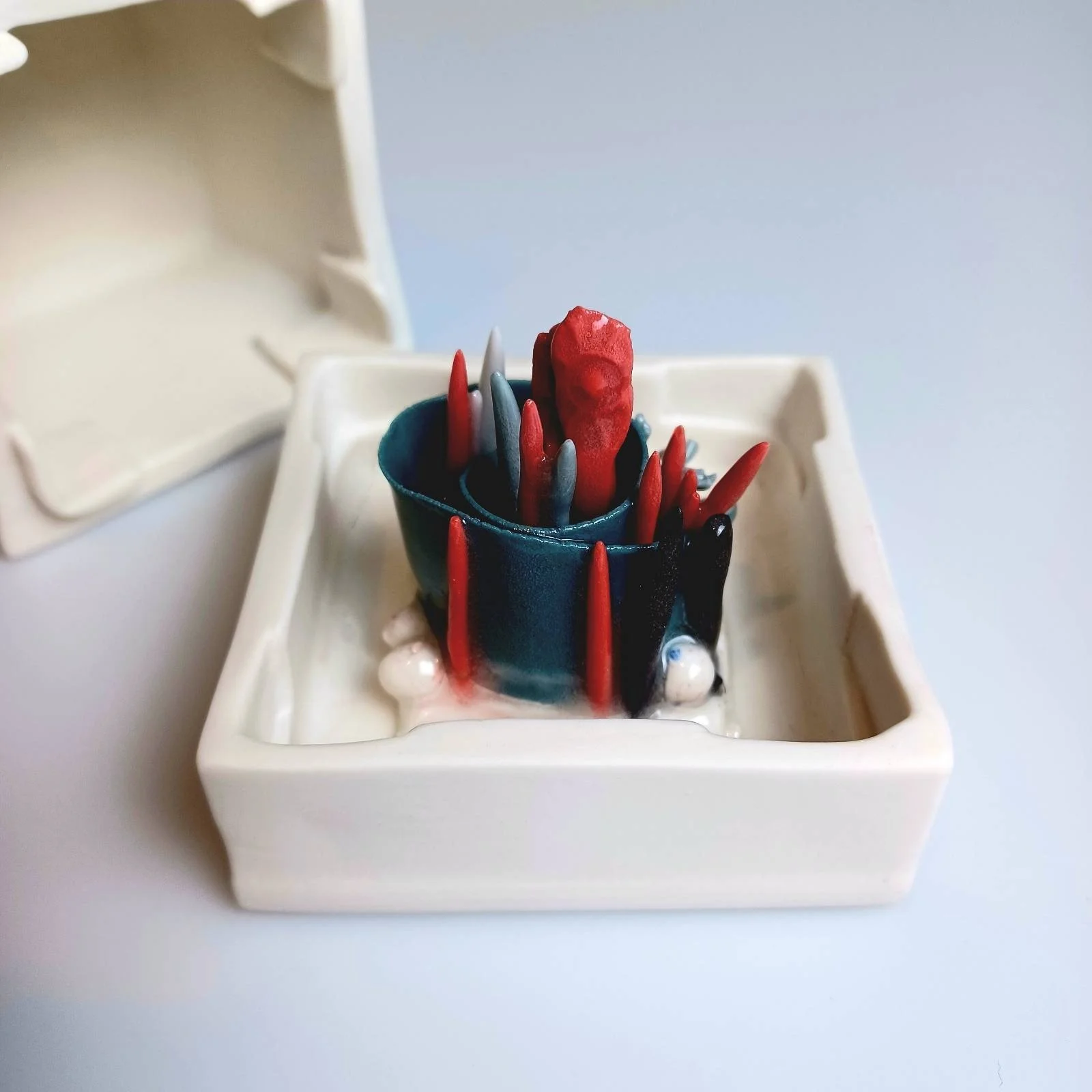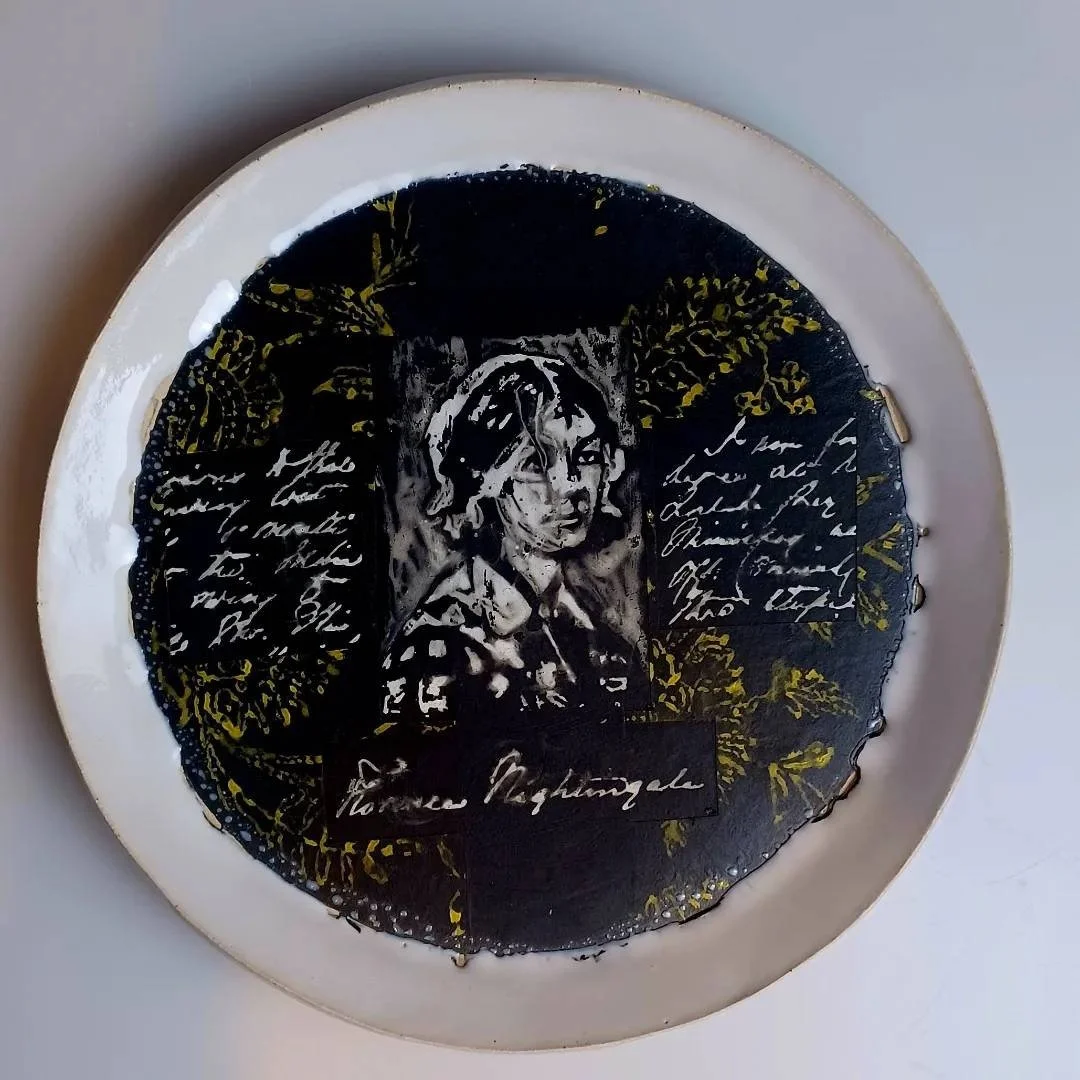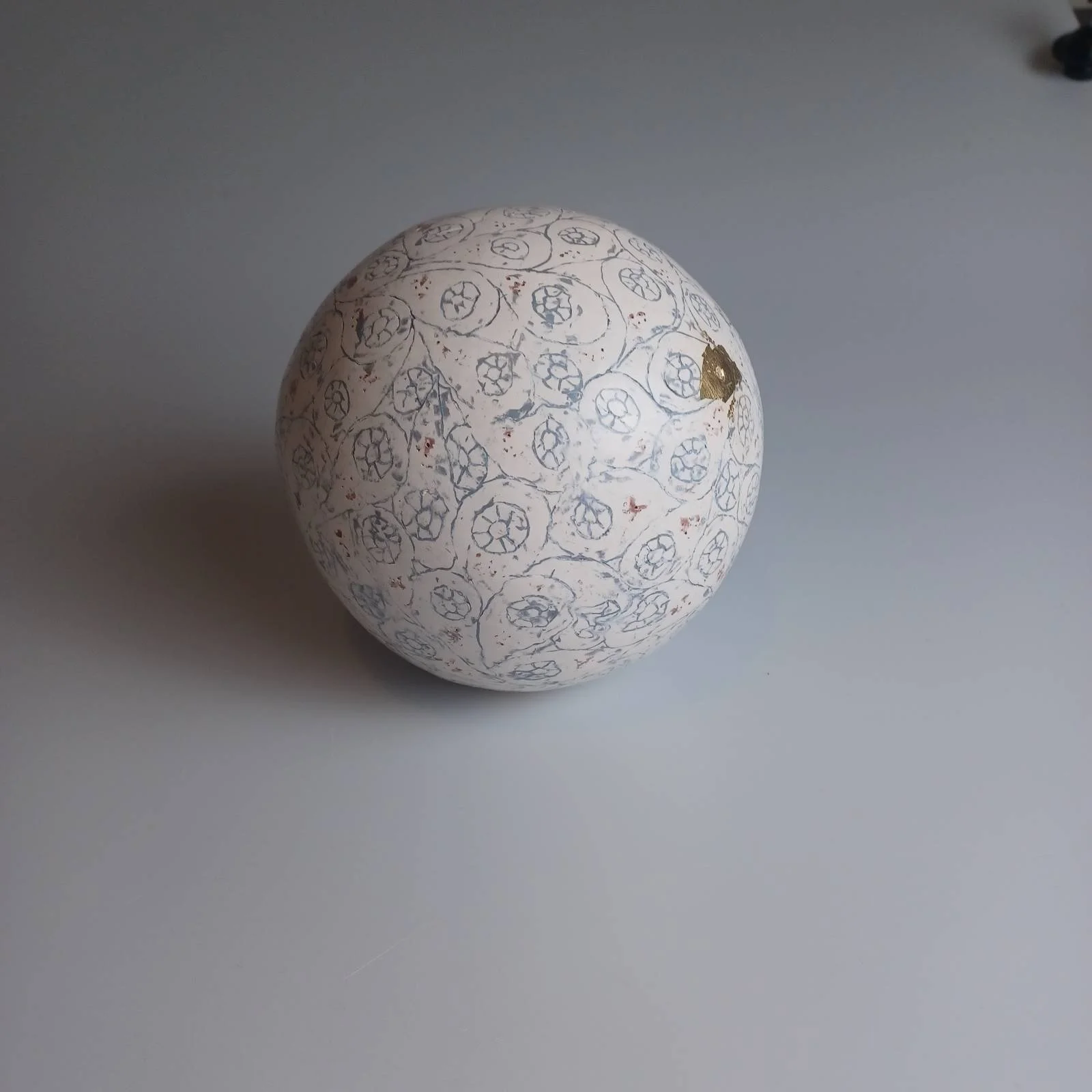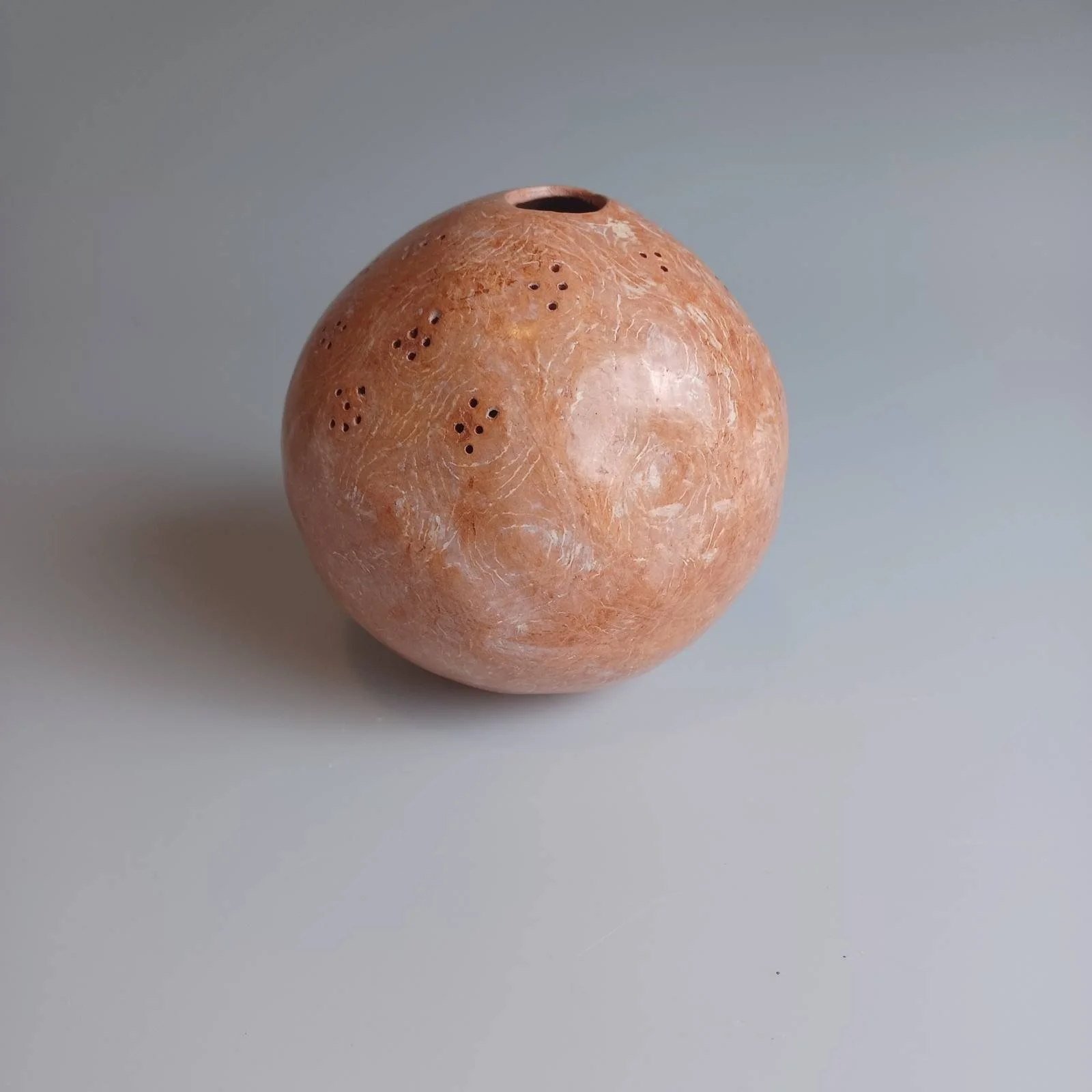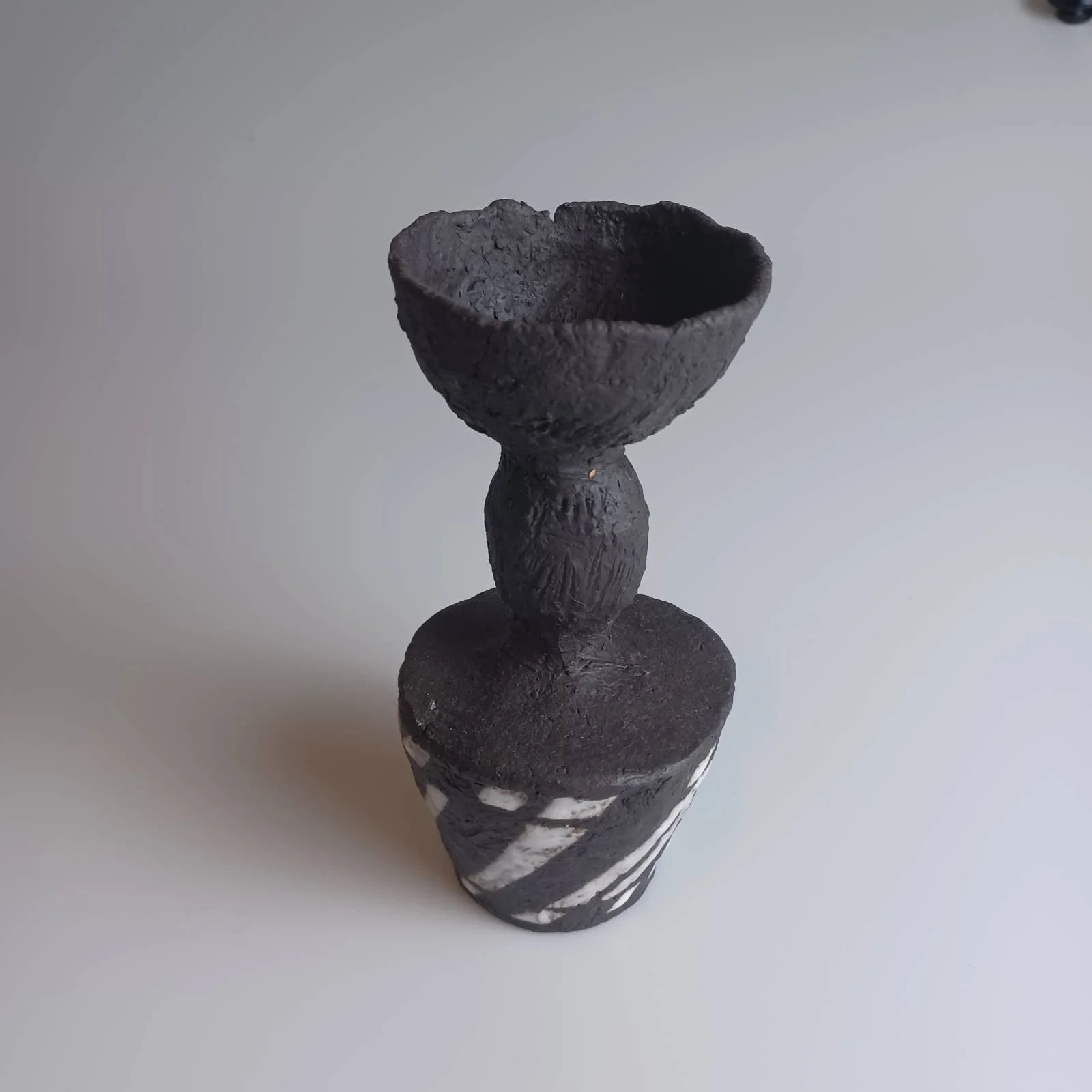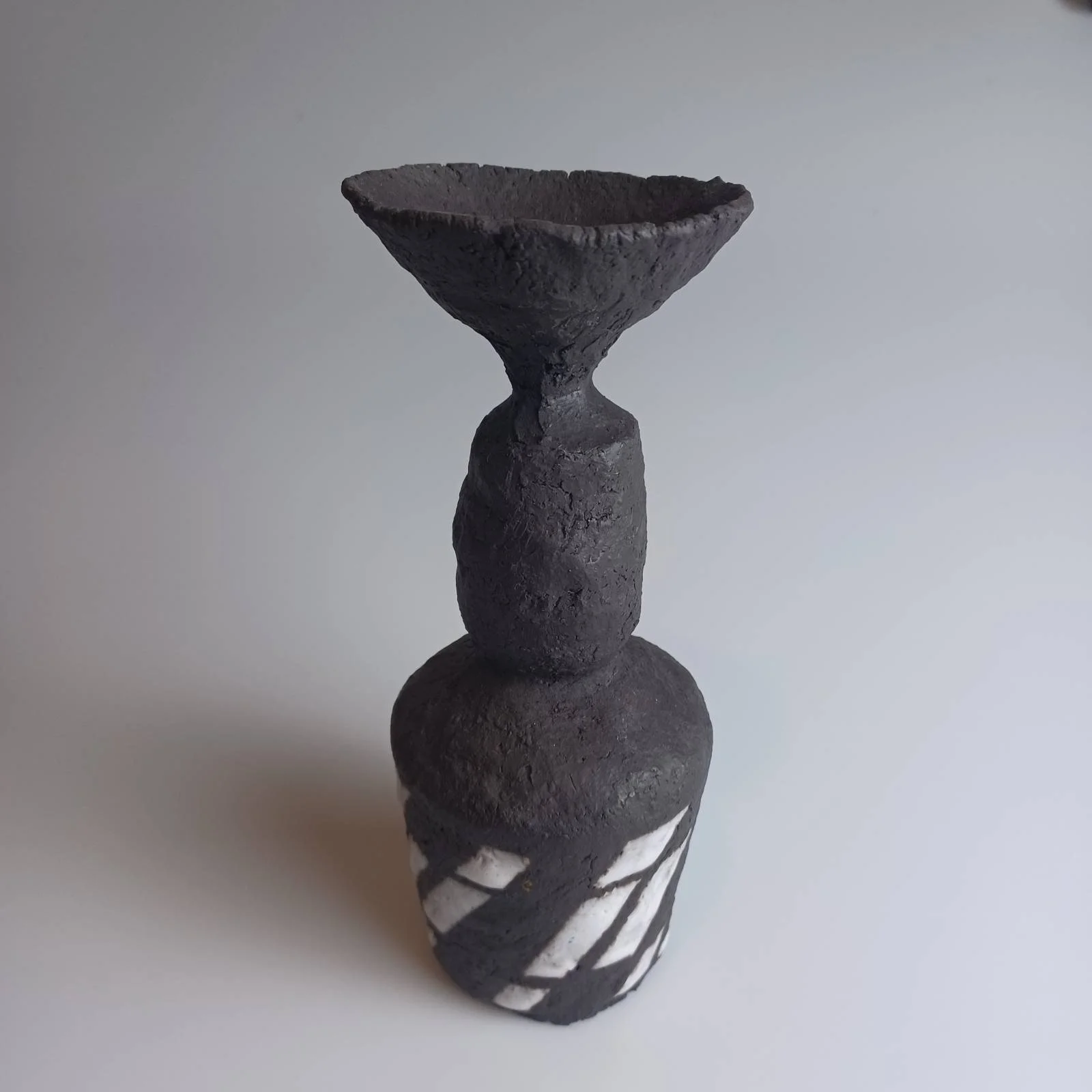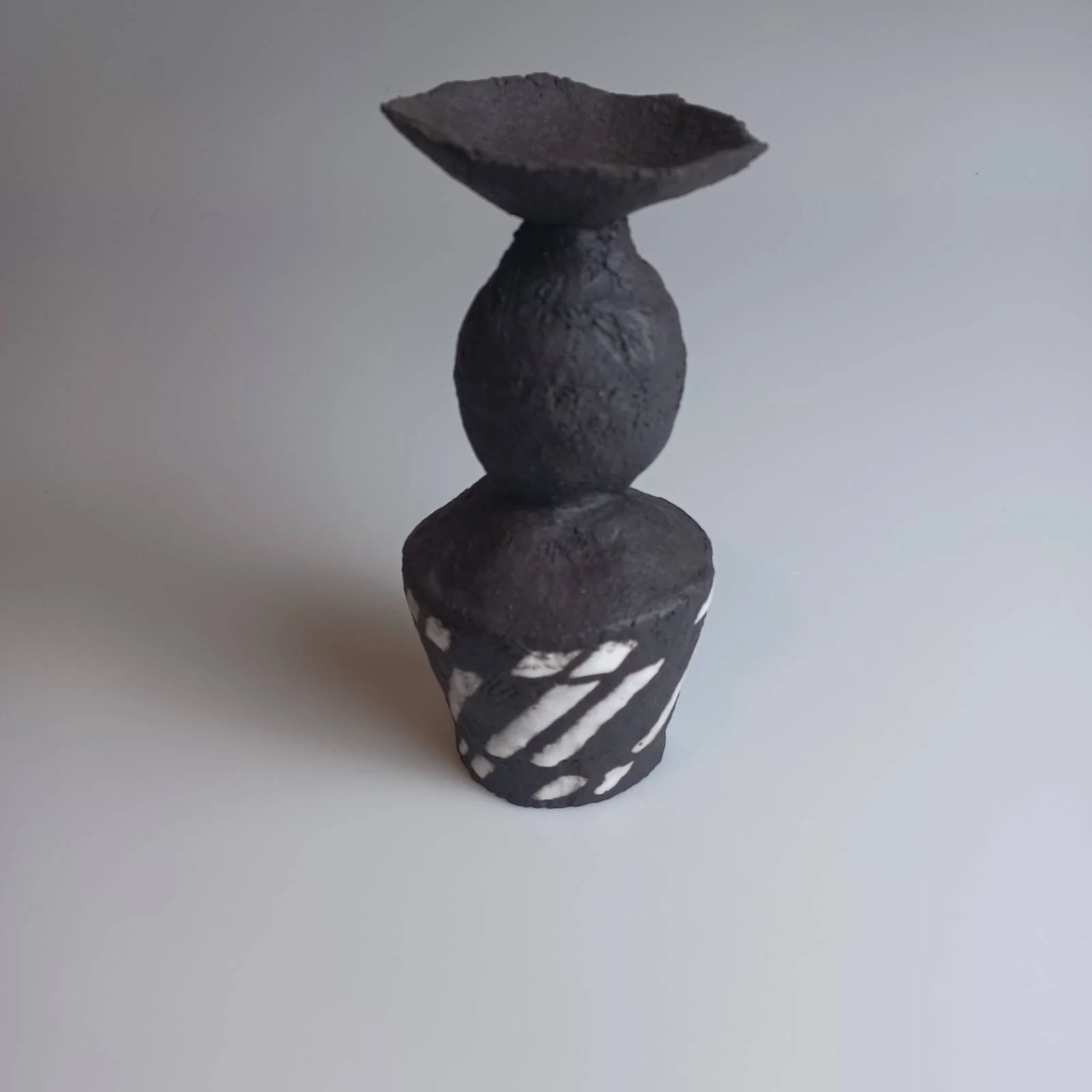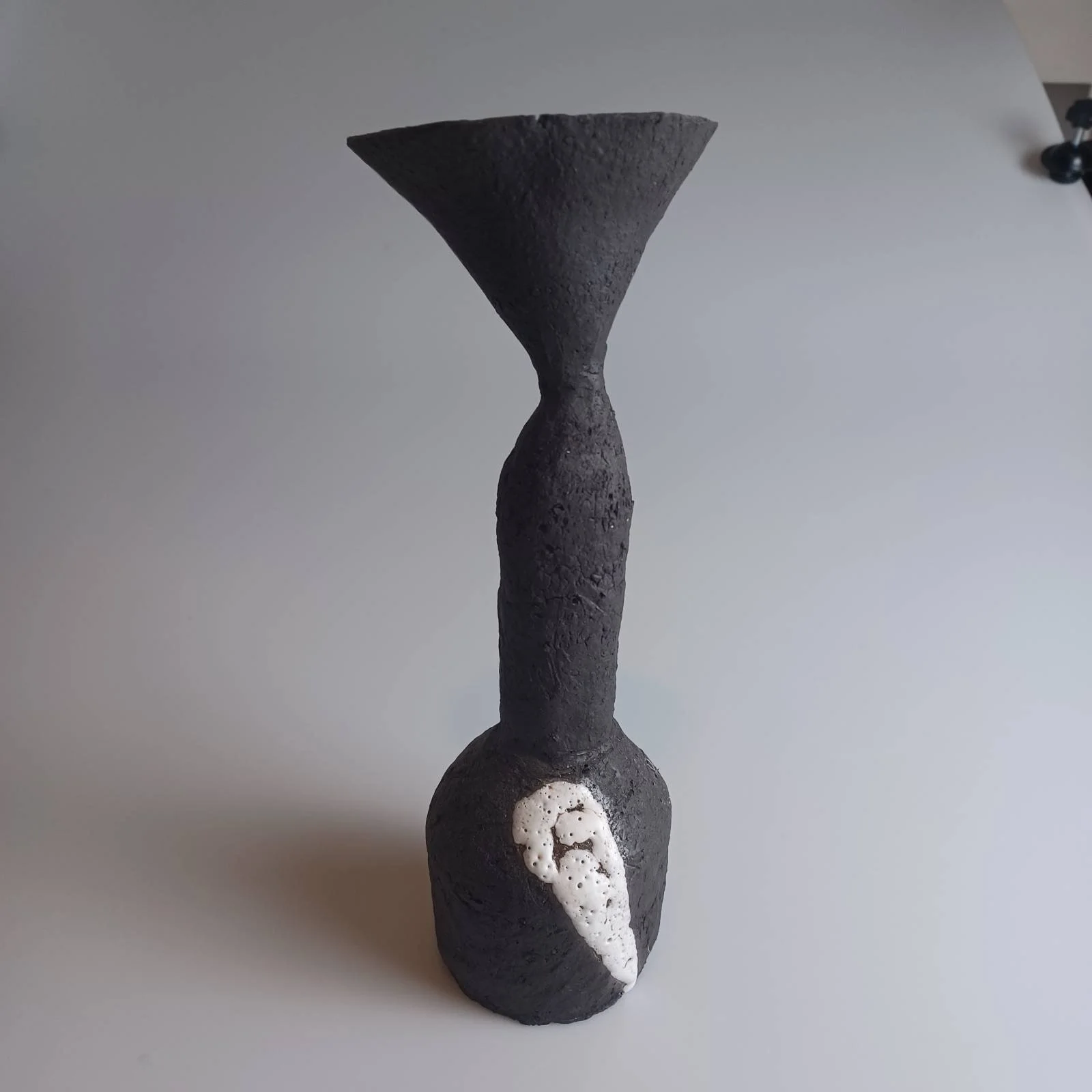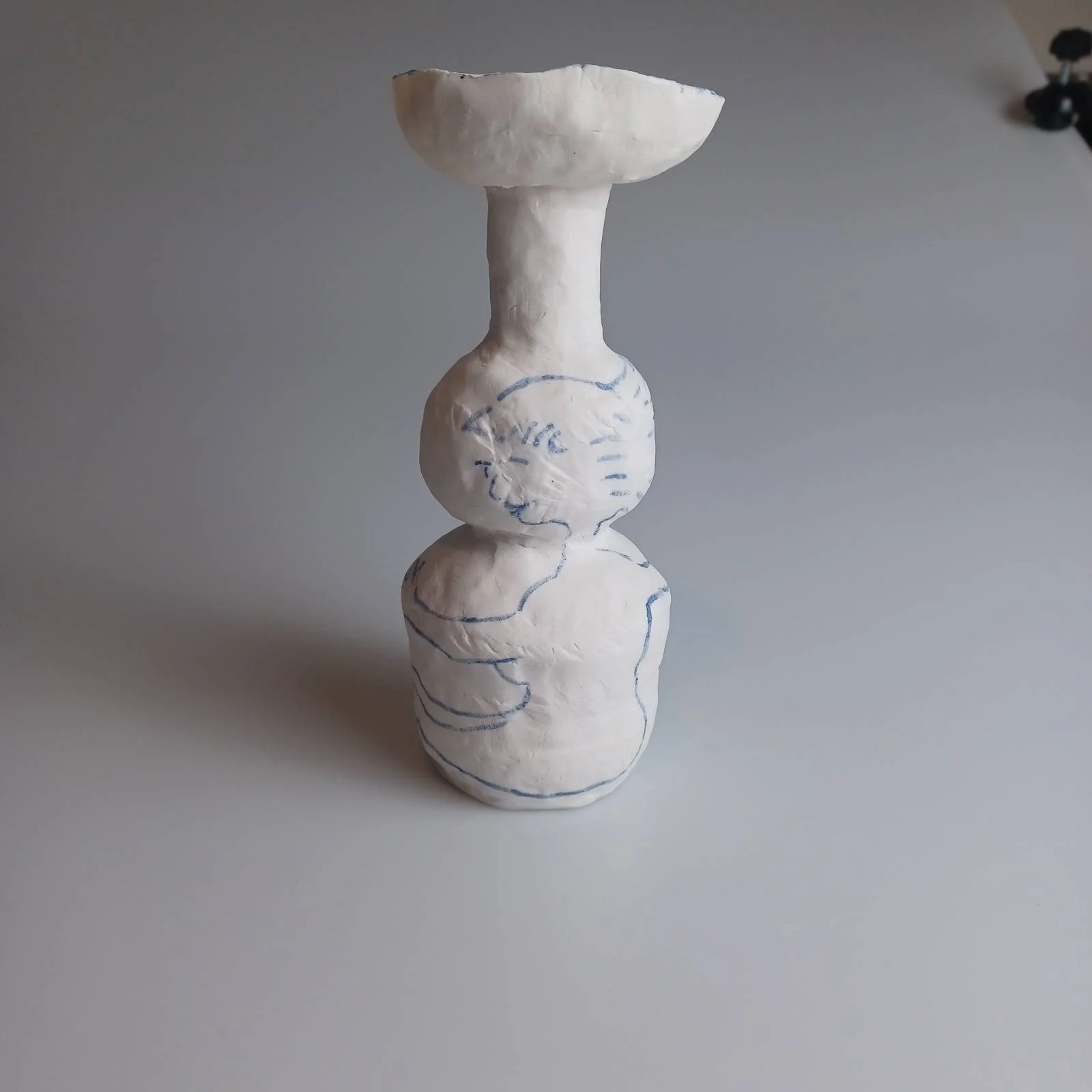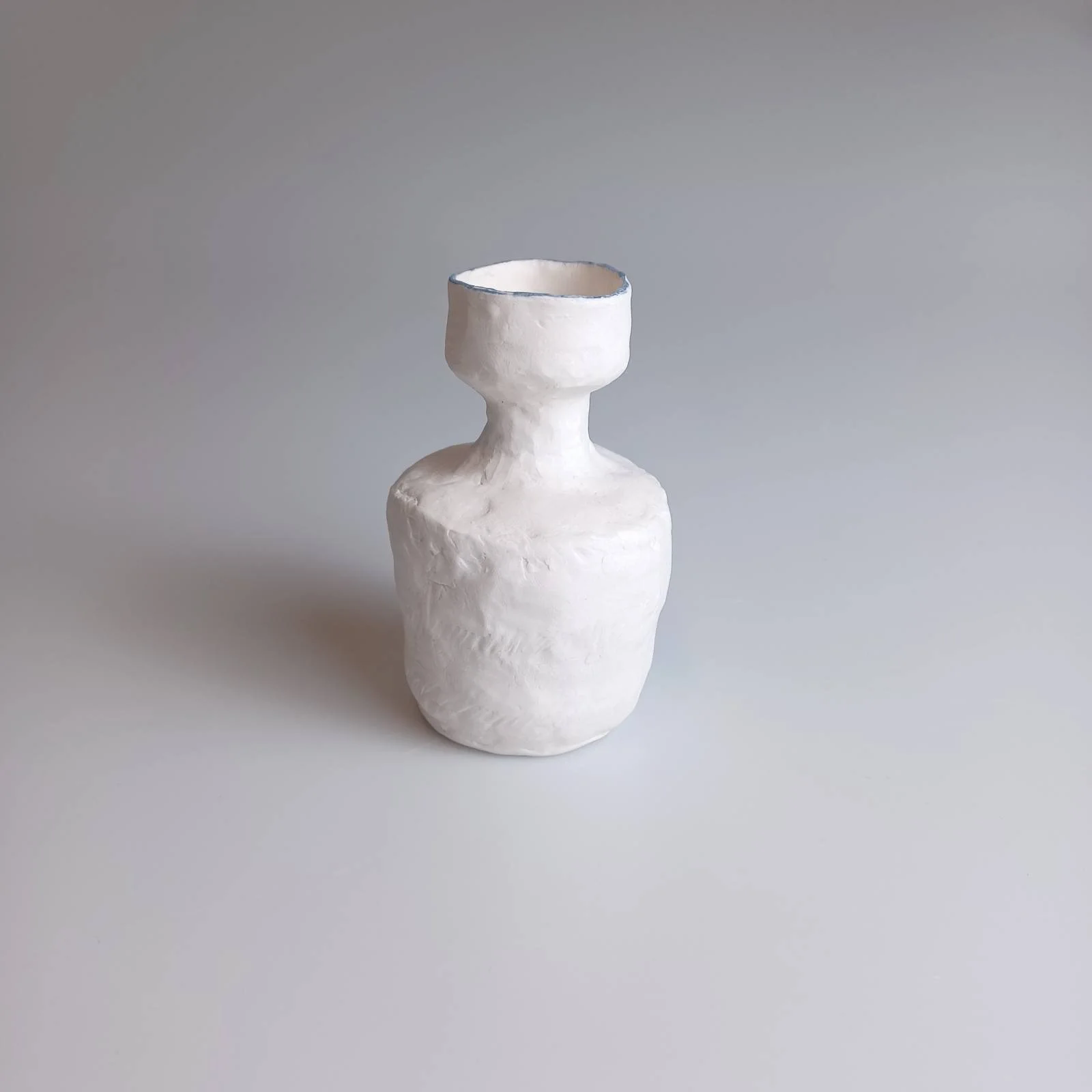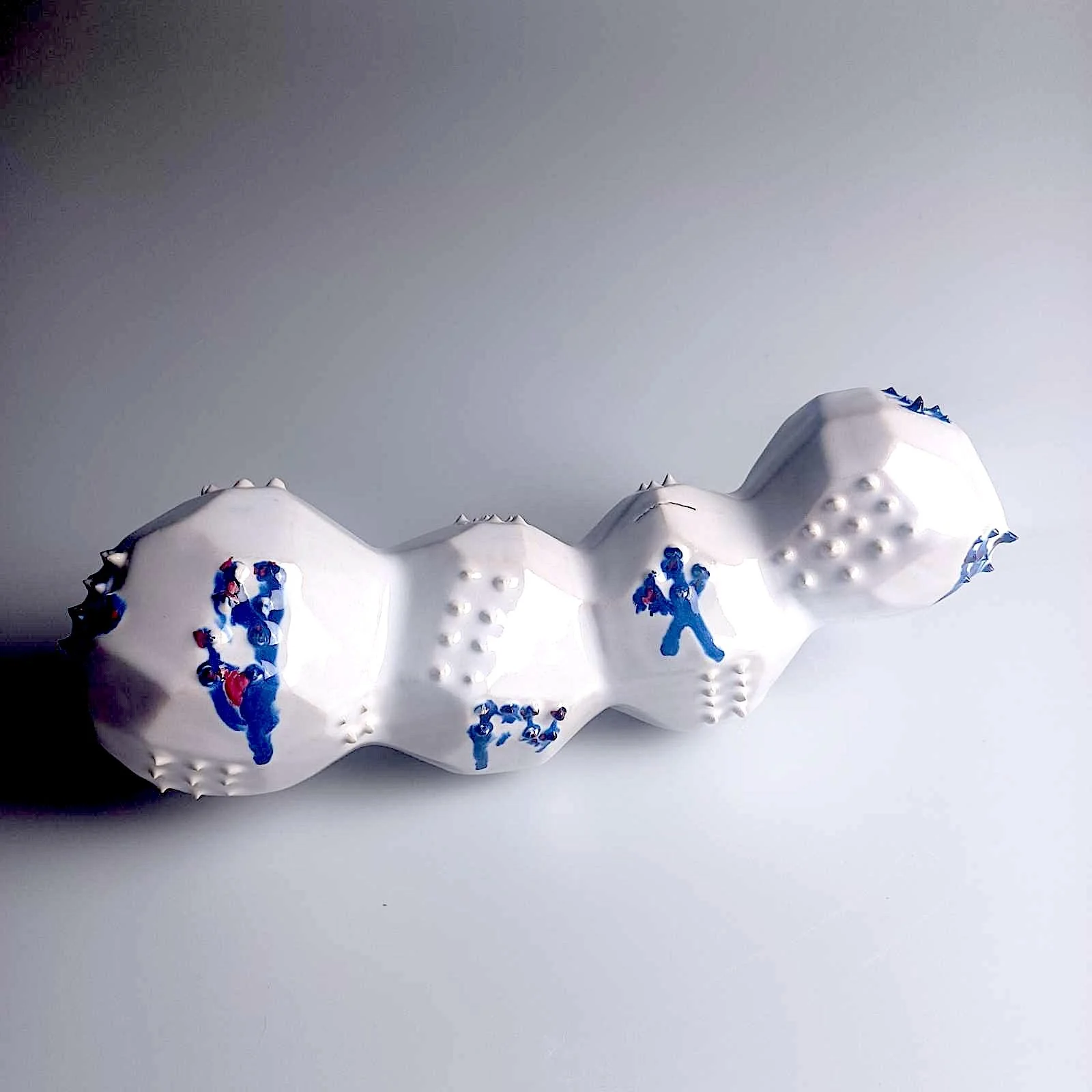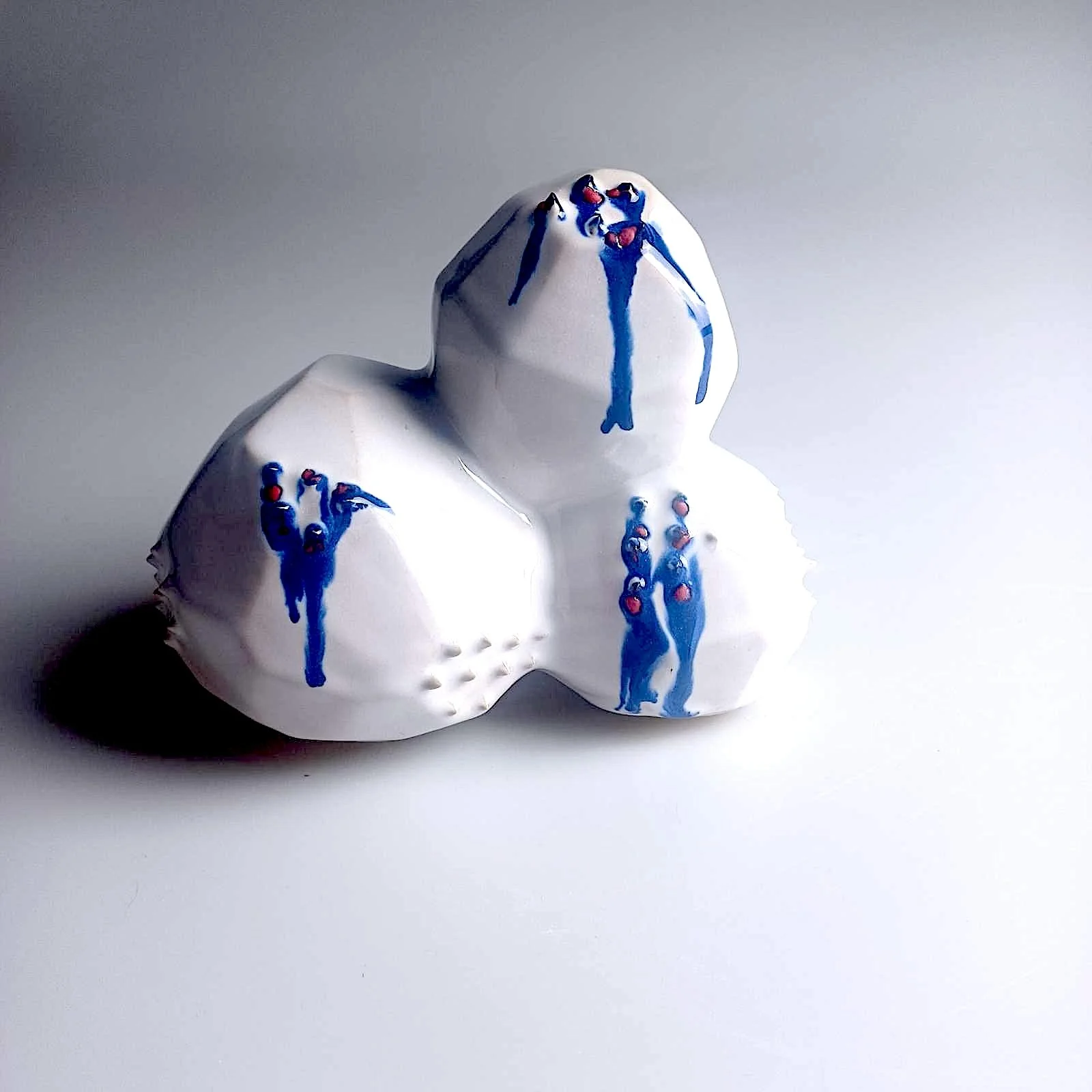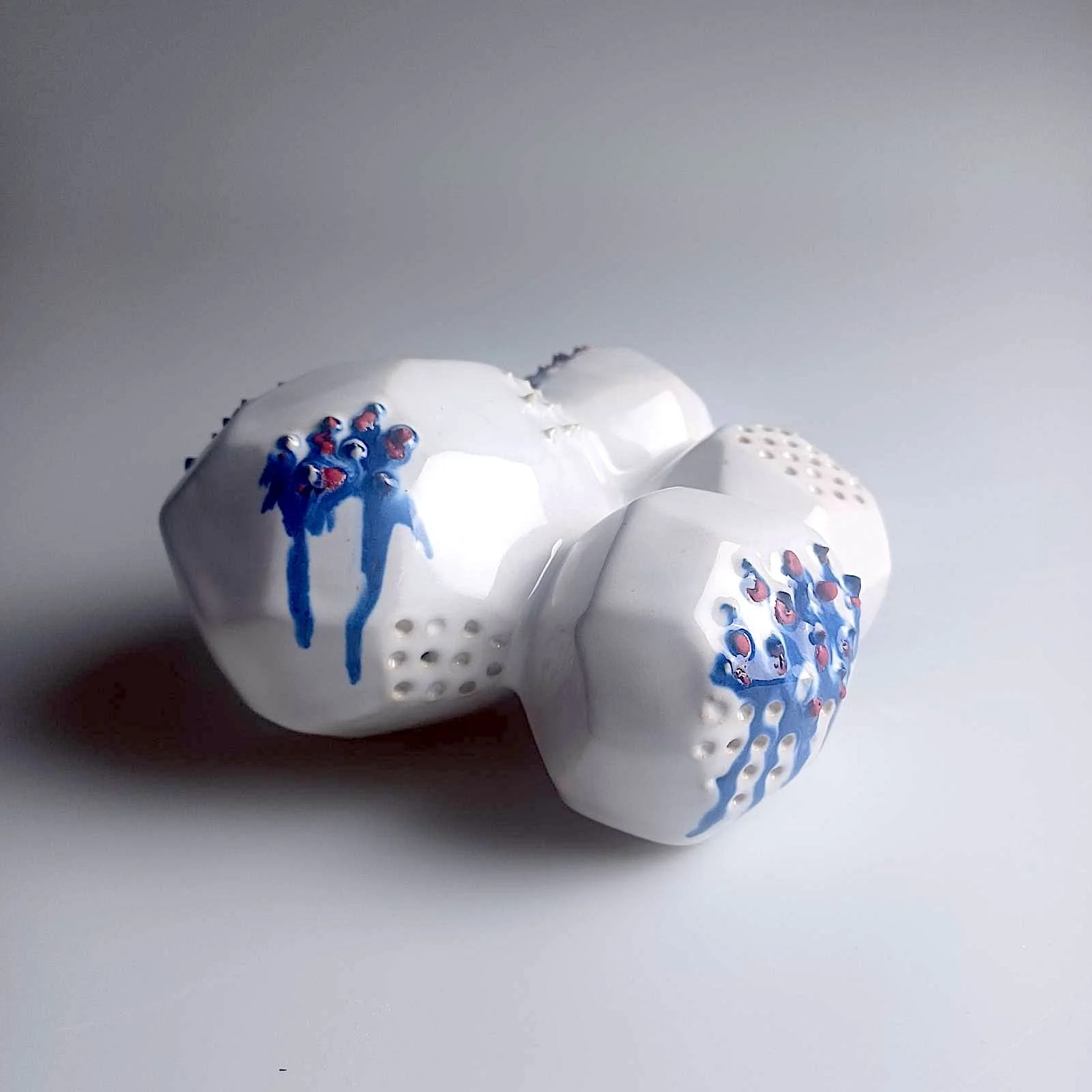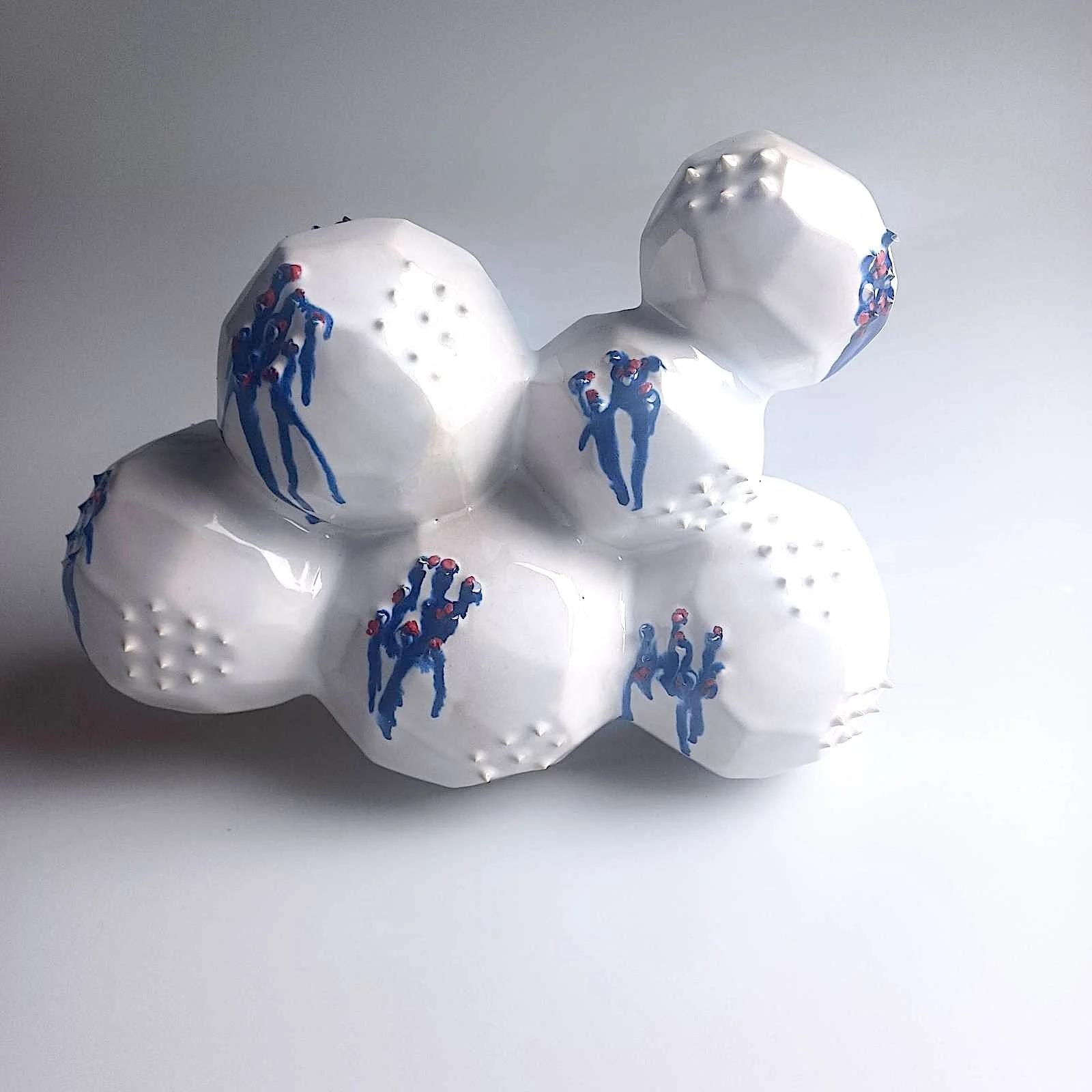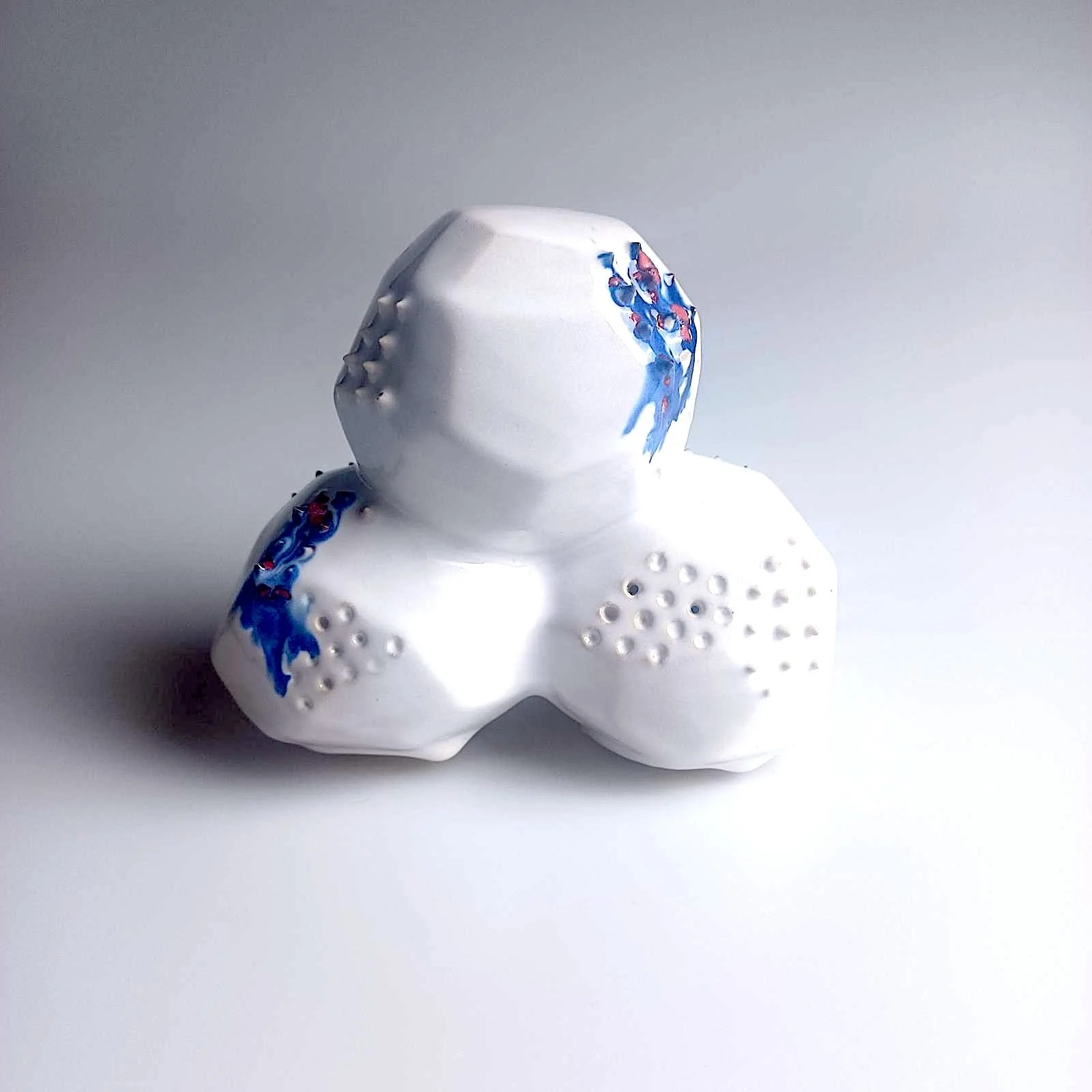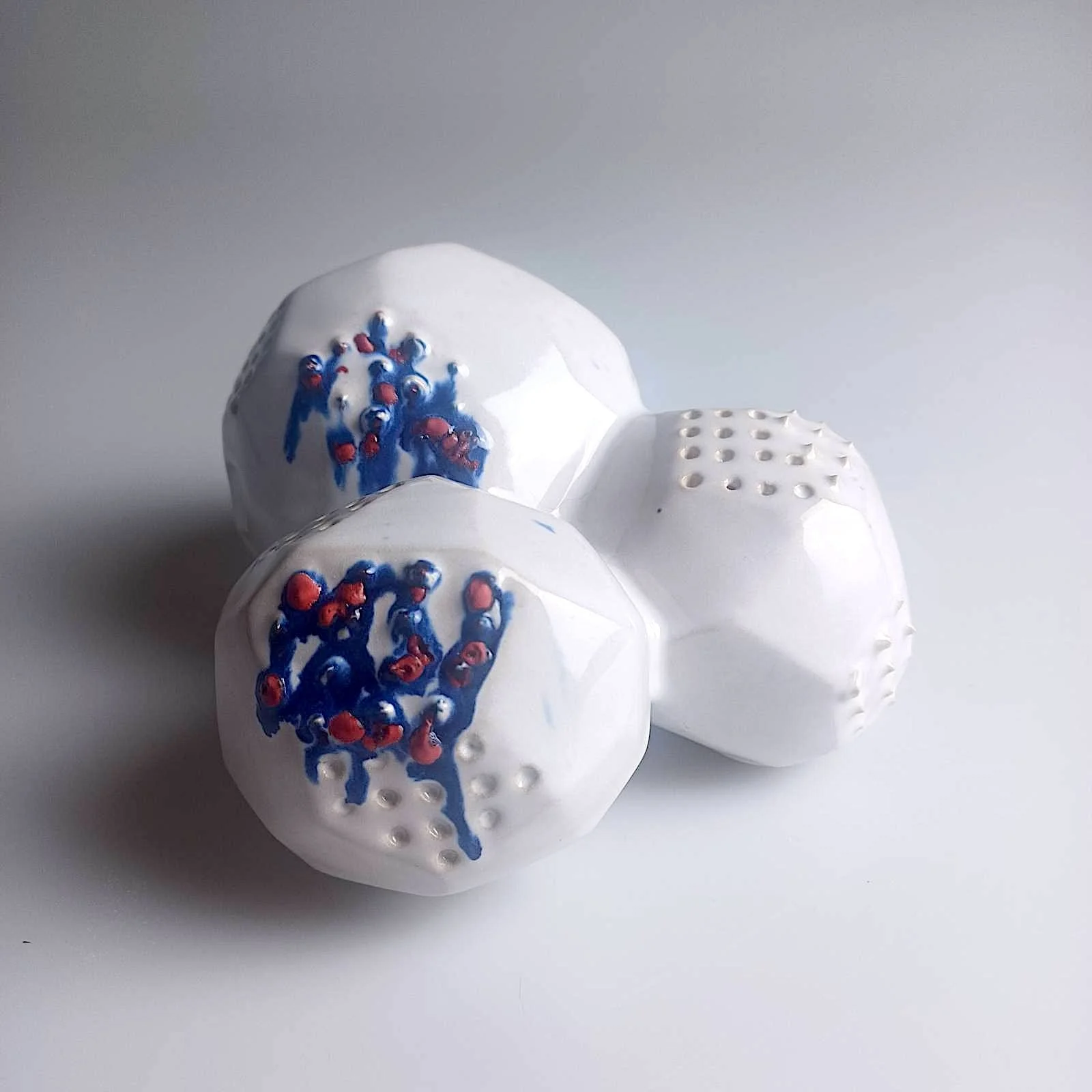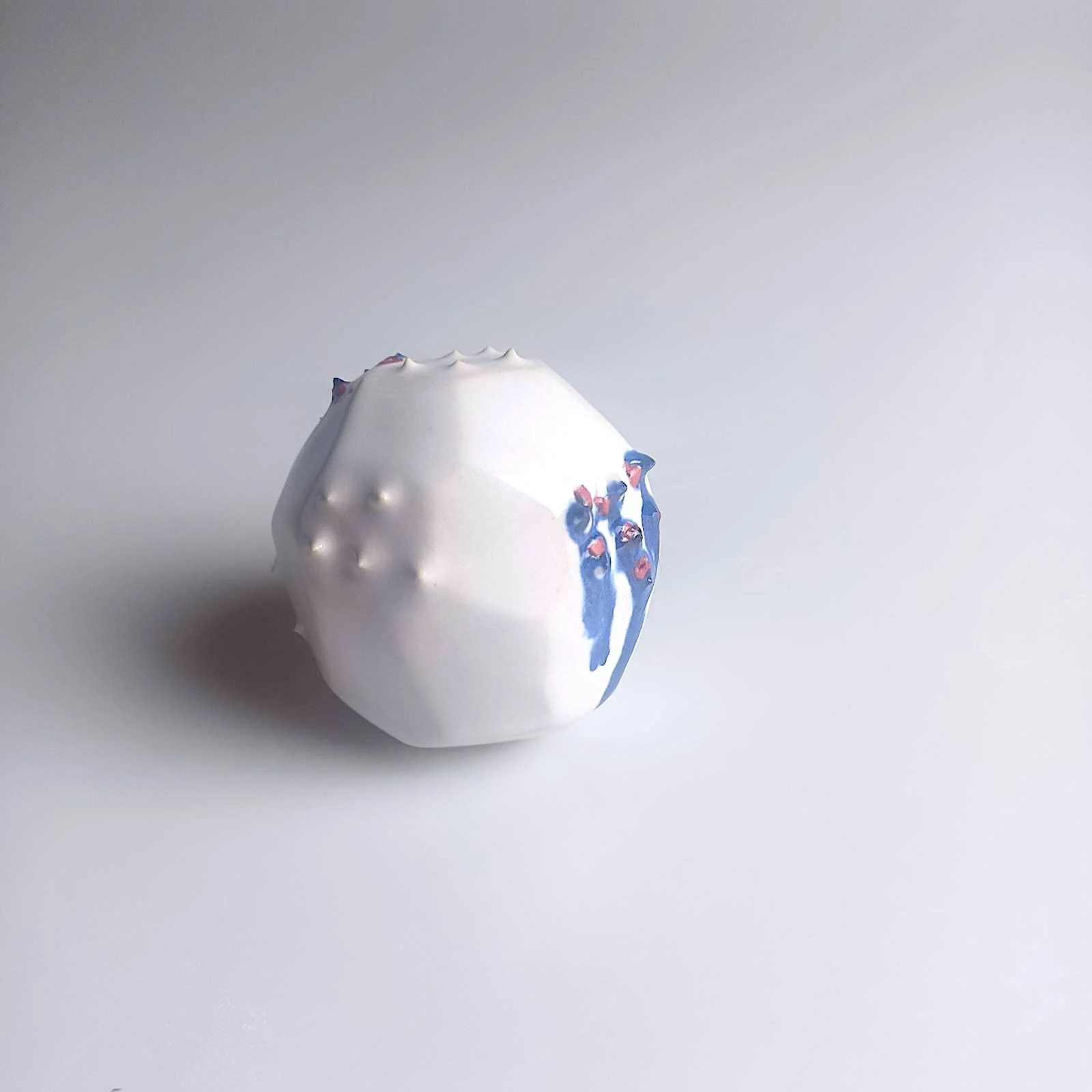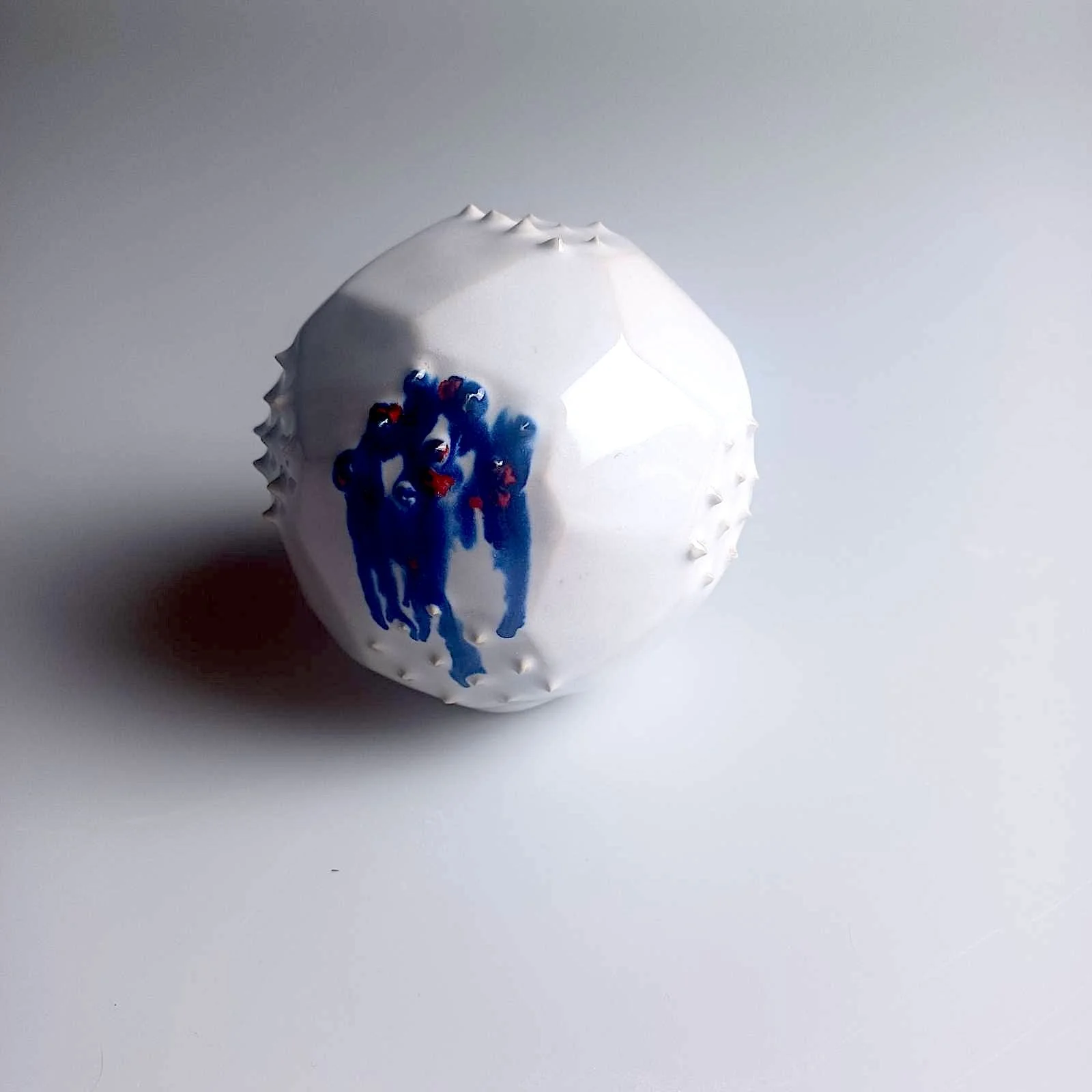Macha, one of the Morrigan crow goddesses from Irish Folklore. Stoneware, porcelain, glaze, platinum lustre
Beadhbh, one of the Morrigan crow goddesses of Irish Folklore. Stoneware, porcelain, glaze, platinum lustre
Imaginari Flore. The piece references floral patterns reminiscent of botanical illustrations. Its colours and glazing echo the soft, vibrant hues in traditional figurines, emphasizing both fragility and vitality. Porcelain, glaze, platinum lustre.
Germinari Flore Small porcelain pieces referencing germination (what seeds do) and chemotaxis (what immune cells do). Organic processes that are essential for life. Ming porcelain, underglaze, glaze, lustre.
One Pill and All Your Dreams will Come True. Papaver Rhœas (Common Poppy). Growing wild in our gardens and fields, this is a distant relative of the Opium Poppy. This poppy also contains a bioactive alkaloid, rheadine, a mild sedative used in old herbal medicines. Its other uses back in the early 1800’s include the treatment of coughs and catarrh. Image and text from Woodville’s Medical Botany. Medicine Jack is a song about a “travelling seller of patent medicines (made of rhubarb, squills, butter, soap, flour and cheese), plaisters and tooth extraction”. Believed to be from around 1860s, it shows how buying and selling medicine was very different to nowadays. Images and text from Wellcome Collection. Hand painted lithograph print, terracotta, slip, decals, glaze
Beware the Serpent’s Tooth. Digitalis Purpurea (fox-glove). The use of digitalis was recorded all the way back in 1652 in Nicholas Culpeper’s herbal medicine guide “The English Physician”, where it was cited for treating wound healing, and various other illnesses that will have different names today: the King’s Evil, the falling sickness and for “a scabby head”. Since then, it was eventually developed into drugs that are still used today for the treatment of heart failure (digoxin). Hand painted lithograph print, terracotta, slip, decals, glaze
Eat me/drink me. Iris Pseudacorus (yellow iris). The iris has been widely used in herbal medicine across the world... UK, China, and Alaska, to name just a few places. It was particularly used for constipation and stomach ache and as a diuretic. Formamint was a lozenge made of formaldehyde, milk. sugar, citric acid, and pepsin-hydrochloric acid. It was a powerful germicide and antiseptic that was marketed during and after the 1918 influenza pandemic and a rather toxic mixture of ingredients if taken in high doses. Echoes of this resonated strongly during the COVID19 pandemic. All images from Wellcome Collection. Hand painted lithograph print, terracotta, slip, decals, glaze
The Cure is Worse Than the Disease. Cinchona Officinalis (quinine). Quinine's ability to reduce fever in malaria led to it becoming a valuable commodity during colonialism. Hand painted lithograph print, terracotta, slip, decals, glaze, 18cm wide
A Spoonful of Sugar Makes the Medicine Go Down. Leontodon Taraxacum (dandelion). from Medical Botany, William Woodville, 1832. Published by the Royal Colleges of Physicians. Hand painted lithograph print, terracotta, slip, decals, glaze, 18cm wide
Swallow the Bitter Pill. Chichorium Intybus "chicory" from Medical Botany, William Woodville, 1832. Published by the Royal Colleges of Physicians. Hand painted lithograph print, white slip, terracotta, clear glaze, toner decals, 18cm wide.
Luminous Boundaries I. Evoking cell membranes in porcelain, stains, glaze, 9 cm wide
Luminous Boundaries II. Evoking cell membranes in porcelain, stains, glaze, 9 cm wide
Cellular Tapestry. A sculptural exploration of microcosmic surfaces. Porcelain, glaze, 11 cm wide
Tapestry of growth at the microscopic level. Porcelain, glaze (closeup), 11 cm wide
Tapestry of growth at the microscopic level. Porcelain, glaze (closeup), 11 cm wide
Specimen IV. Growing, changing and forming. Biology in its own time, contained. Porcelain, stains, glaze, 7 cm wide.
Specimen II. Growing, changing and forming. Biology in its own time, contained. Porcelain, stains, glaze, 7 cm wide.
Specimen I. Growing, changing and forming. Biology in its own time, contained. Porcelain, stains, glaze, 7 cm wide.
Specimen III. Growing, changing and forming. Biology in its own time, contained. Porcelain, stains, glaze, 7 cm wide.
Specimen V. Growing, changing and forming. Biology in its own time, contained. Porcelain, stains, glaze, 10 cm wide.
Specimen box. Porcelain, stains, glaze, 8 cm wide, 10 cm high.
Specimen box. Porcelain, stains, glaze.
Specimen box. Porcelain, stains, glaze, 8 cm wide, 10 cm high..
Specimen box. Porcelain, stains, glaze, 8 cm wide, 10 cm high..
Florence: Founder of Modern Nursing. Stoneware, slip, glaze, 18 cm wide.
Science (his)tories 4. Marie Sklodowska Curie. Stoneware, tin glaze, underglaze.
Science (his)tories 1. Rosalind Franklin. Stoneware, tin glaze, monoprints.
Burnished stoneware
Burnished stoneware, gold leaf, underglaze
Burnished stoneware, underglaze, 10 cm wide.
Vessel I. Black stoneware, tin glaze, 10 cm high.
Vessel II. Black stoneware, tin glaze, 12 cm high.
Vessel III. Black stoneware, tin glaze, 10 cm high.
Vessel IV. Black stoneware, tin glaze, 17 cm high.
My body in my hands I. Porcelain paperclay, cobalt, 10 cm high.
My body in my hands II. Porcelain paperclay, cobalt, 7 cm high.
Hypothetical Forms I. Stoneware, cobalt, tin glaze, 16 cm long.
Hypothetical Forms II. Stoneware, cobalt, tin glaze, 10 cm high.
Hypothetical Forms III. Stoneware, cobalt, tin glaze, 11 cm wide.
Hypothetical Forms IV. Stoneware, cobalt, tin glaze.
Hypothetical Forms V. Stoneware, cobalt, tin glaze.
Hypothetical Forms VI. Stoneware, cobalt, tin glaze, 16 cm long.
Hypothetical Forms VII. Stoneware, cobalt, tin glaze, 7 cm high.
Hypothetical Forms VIII. Stoneware, cobalt, tin glaze, 10 cm long.
Hypothetical Forms IX. Stoneware, cobalt, tin glaze, 5 cm high.
Hypothetical Forms X. Stoneware, cobalt, tin glaze, 7 cm high.
